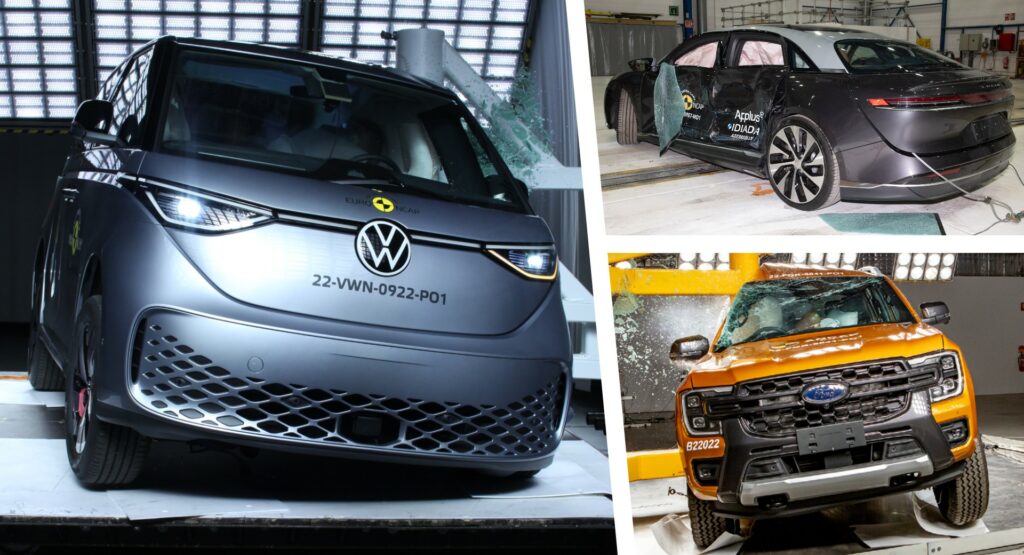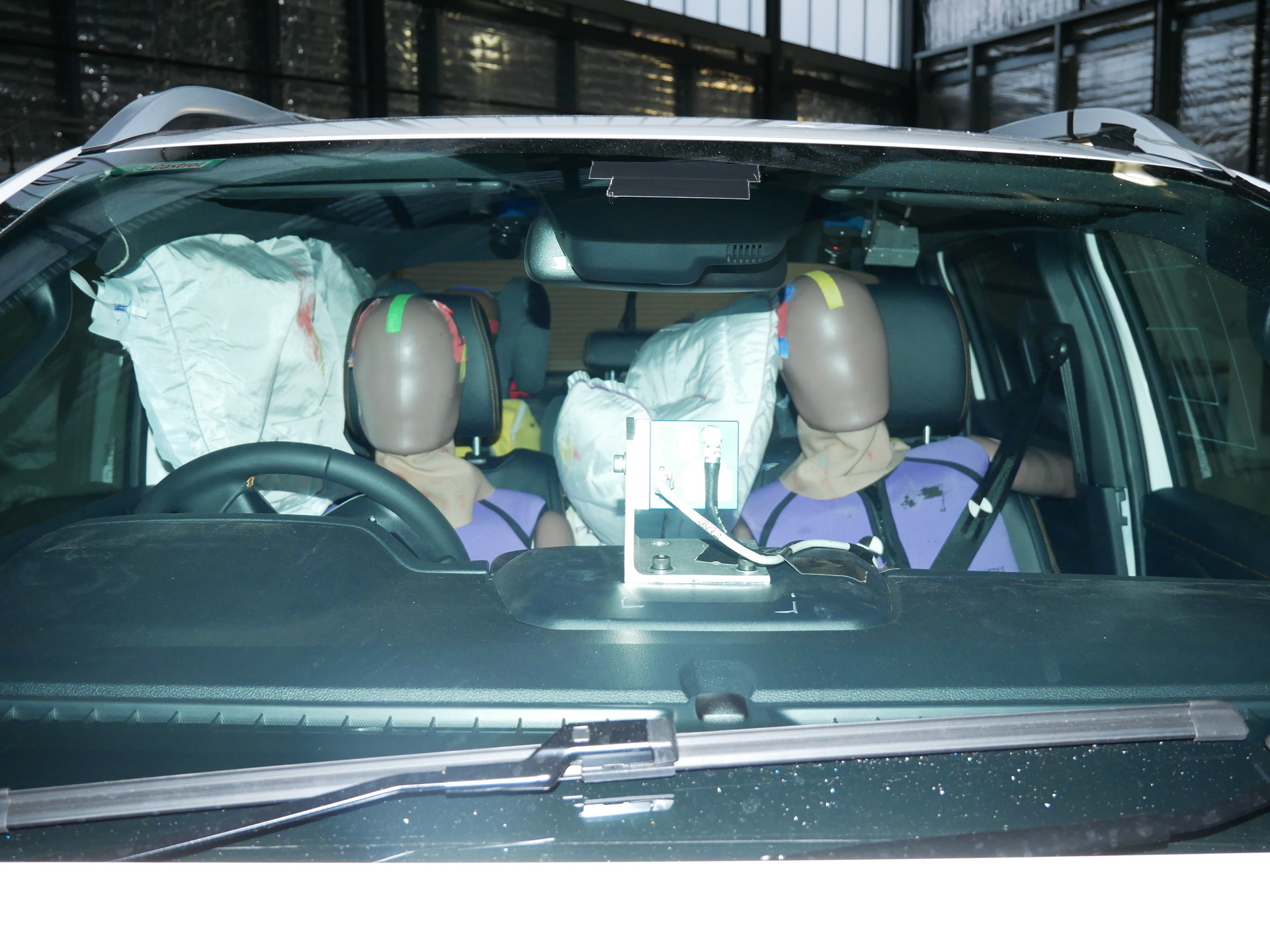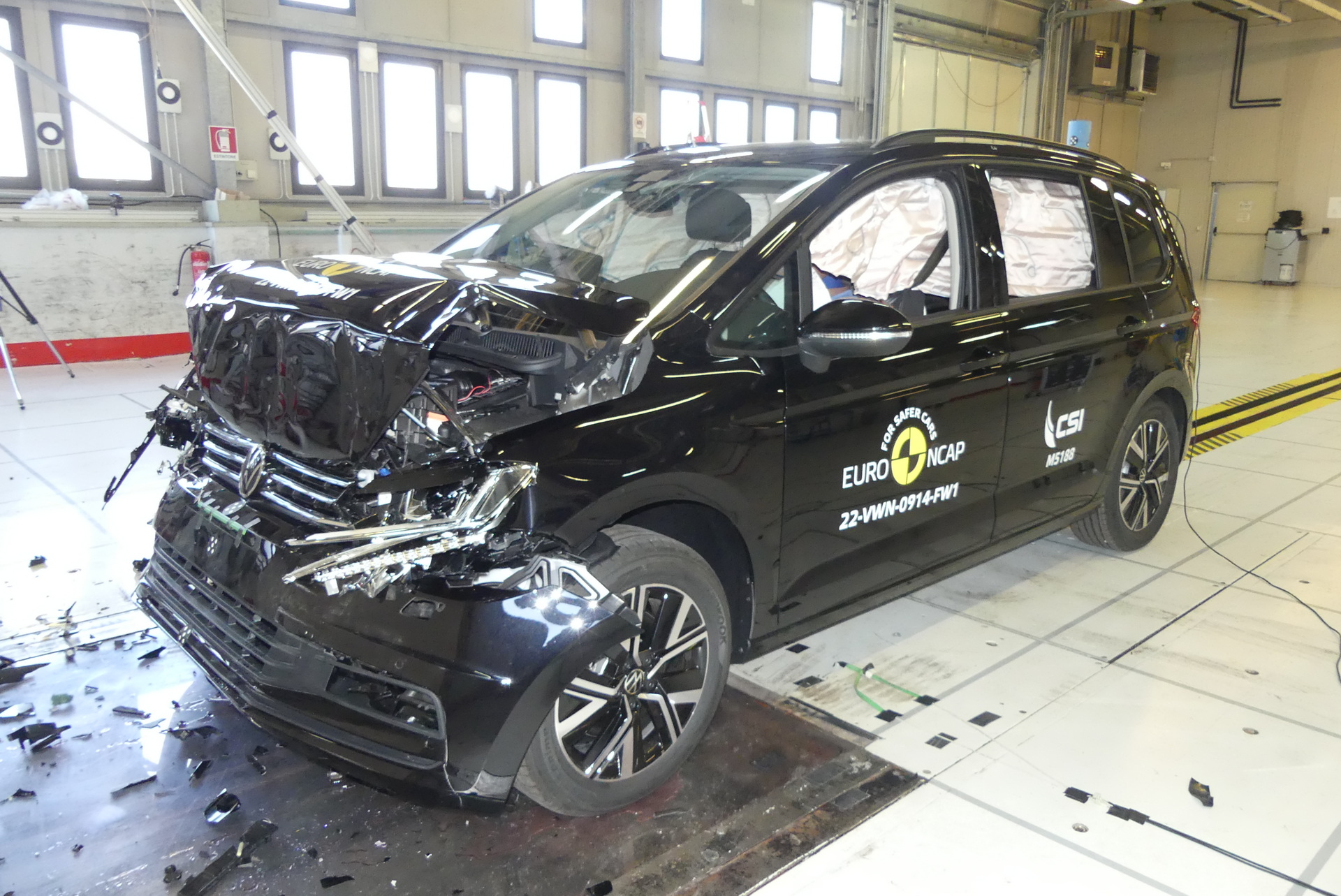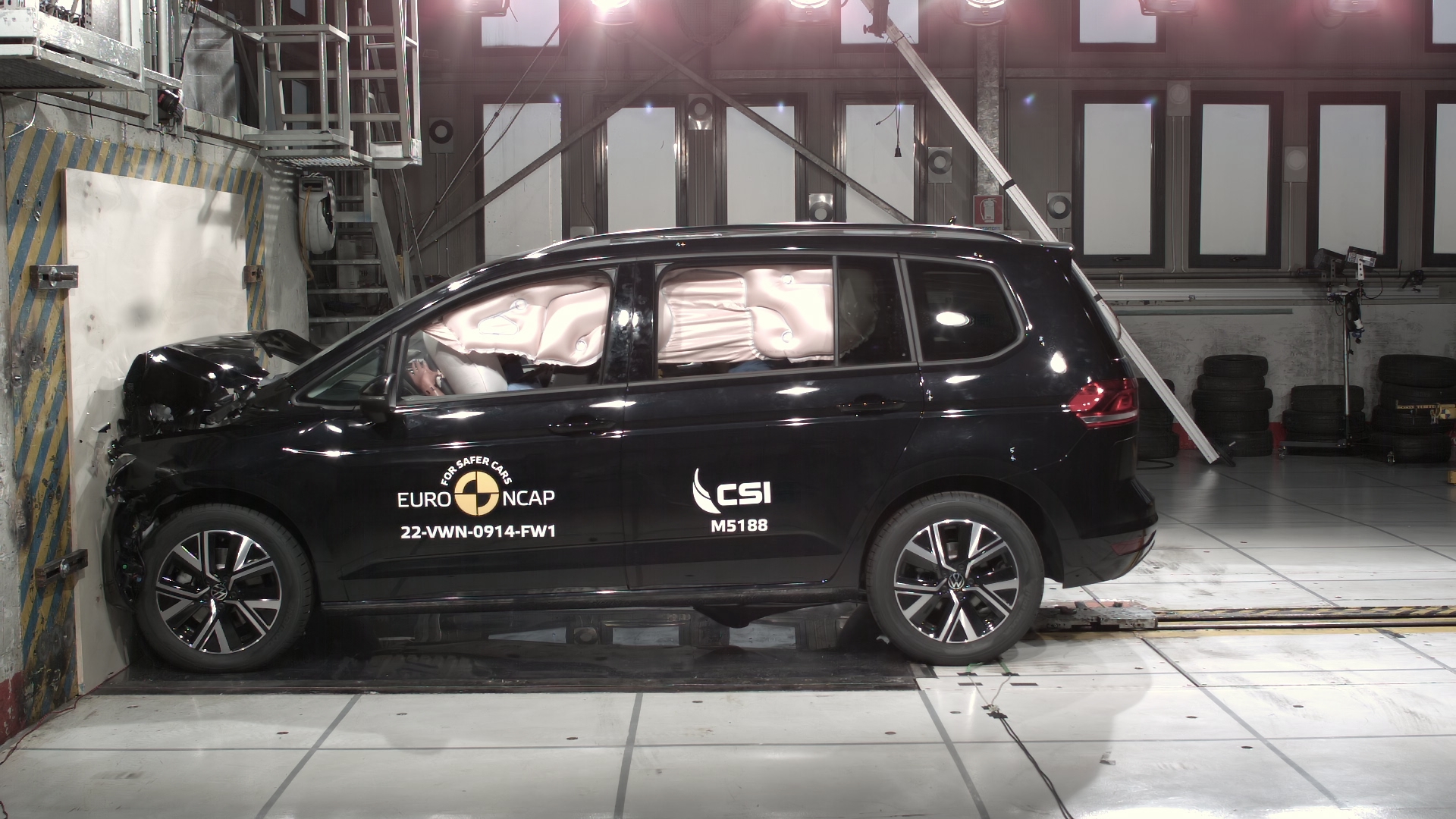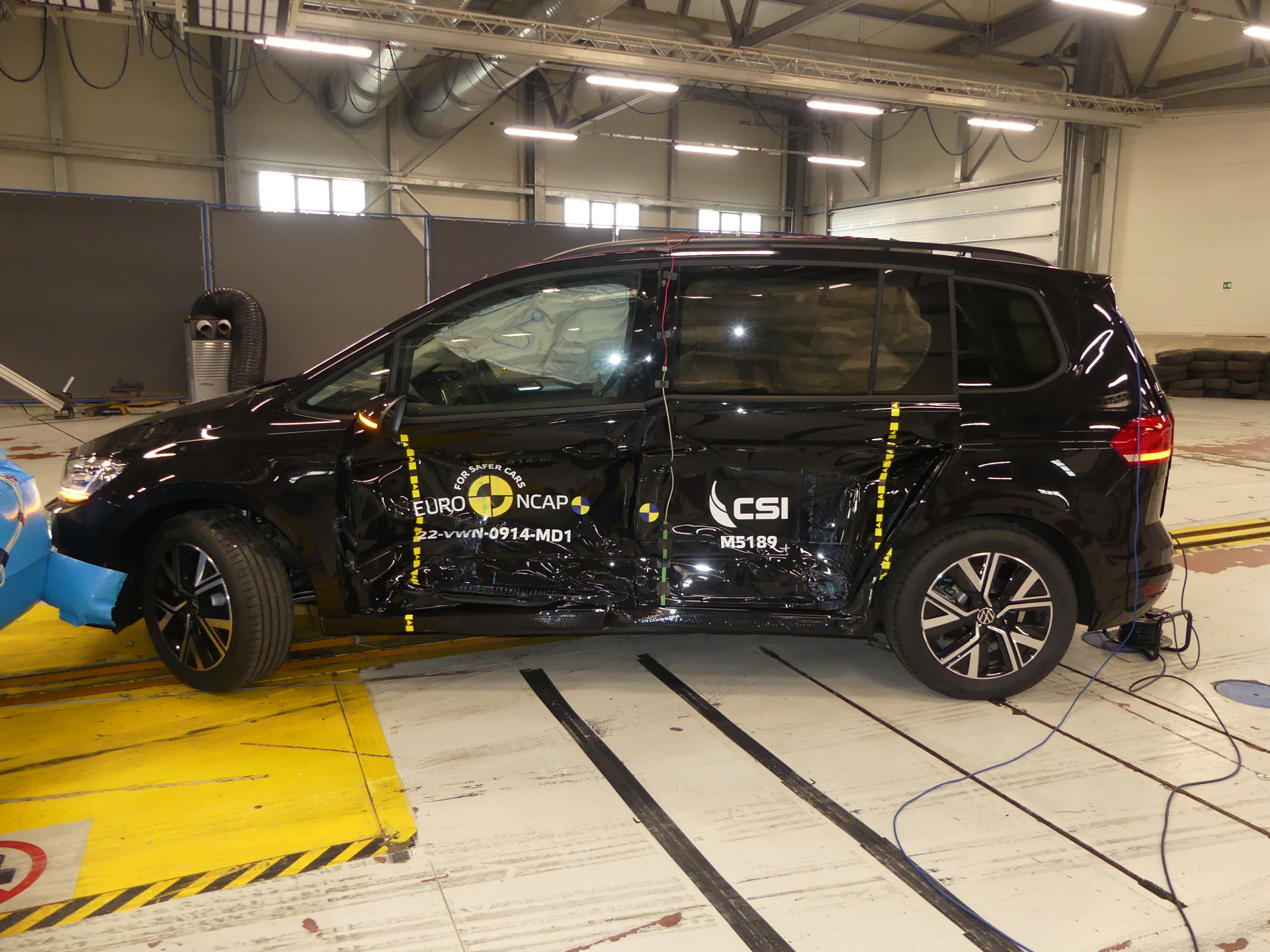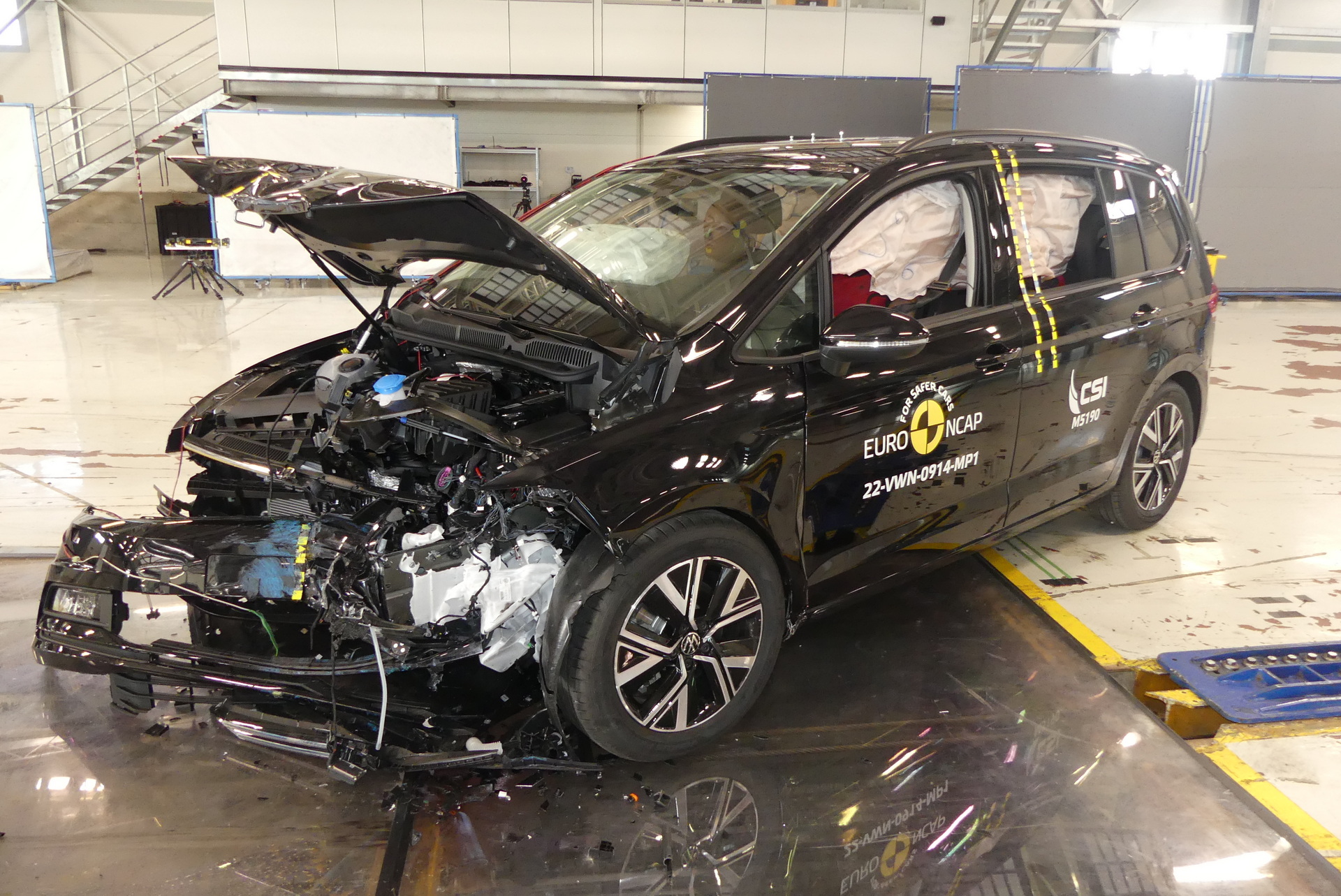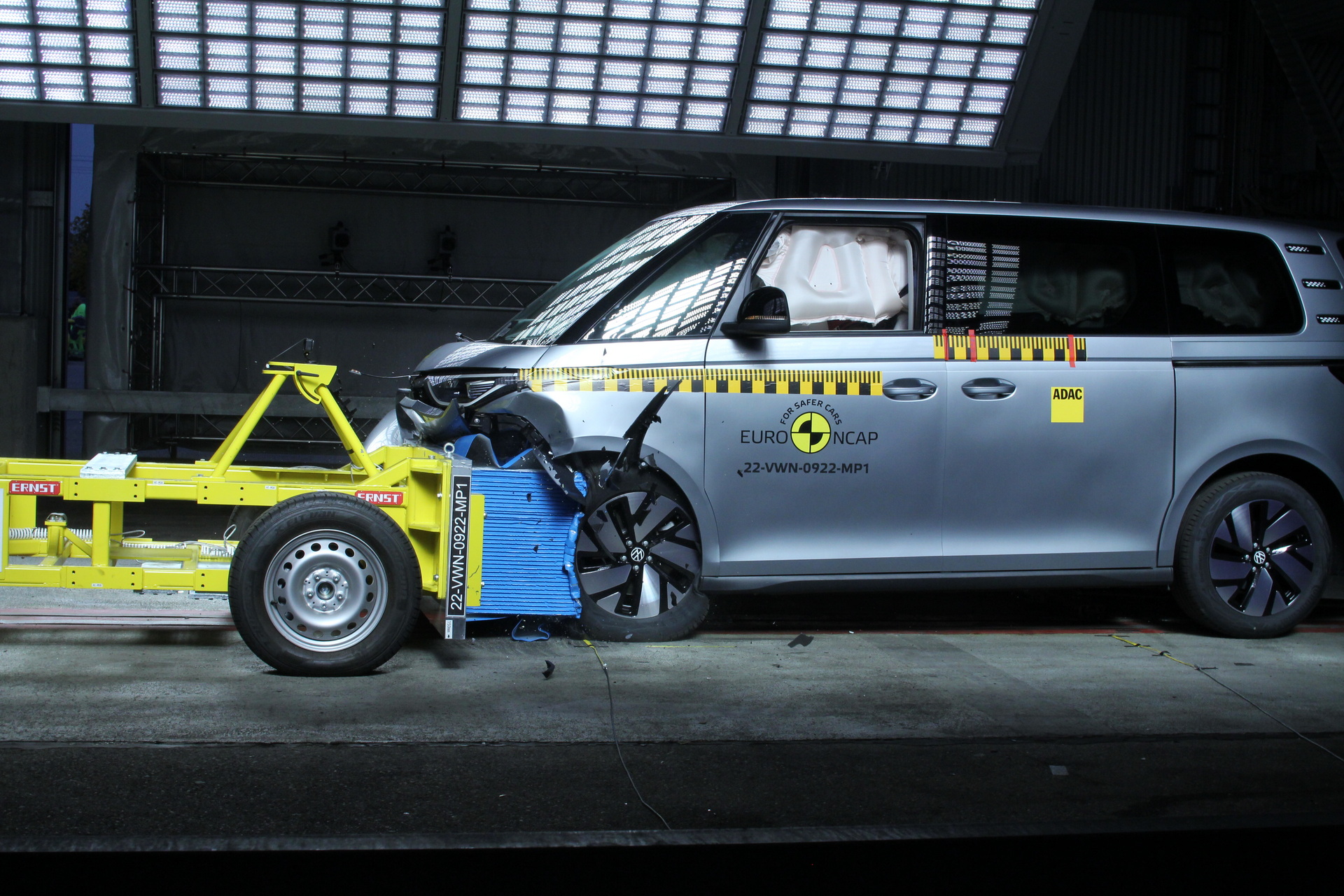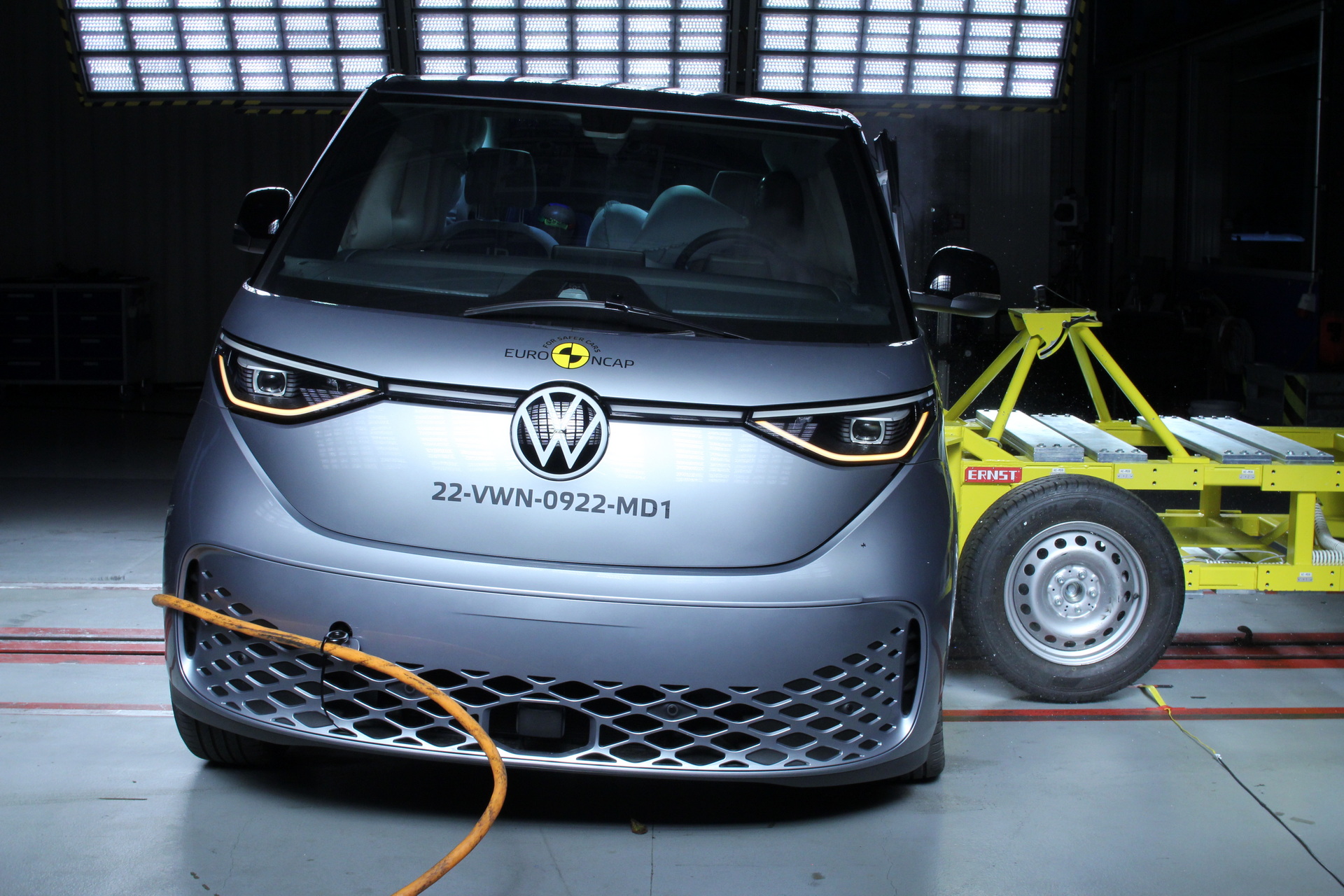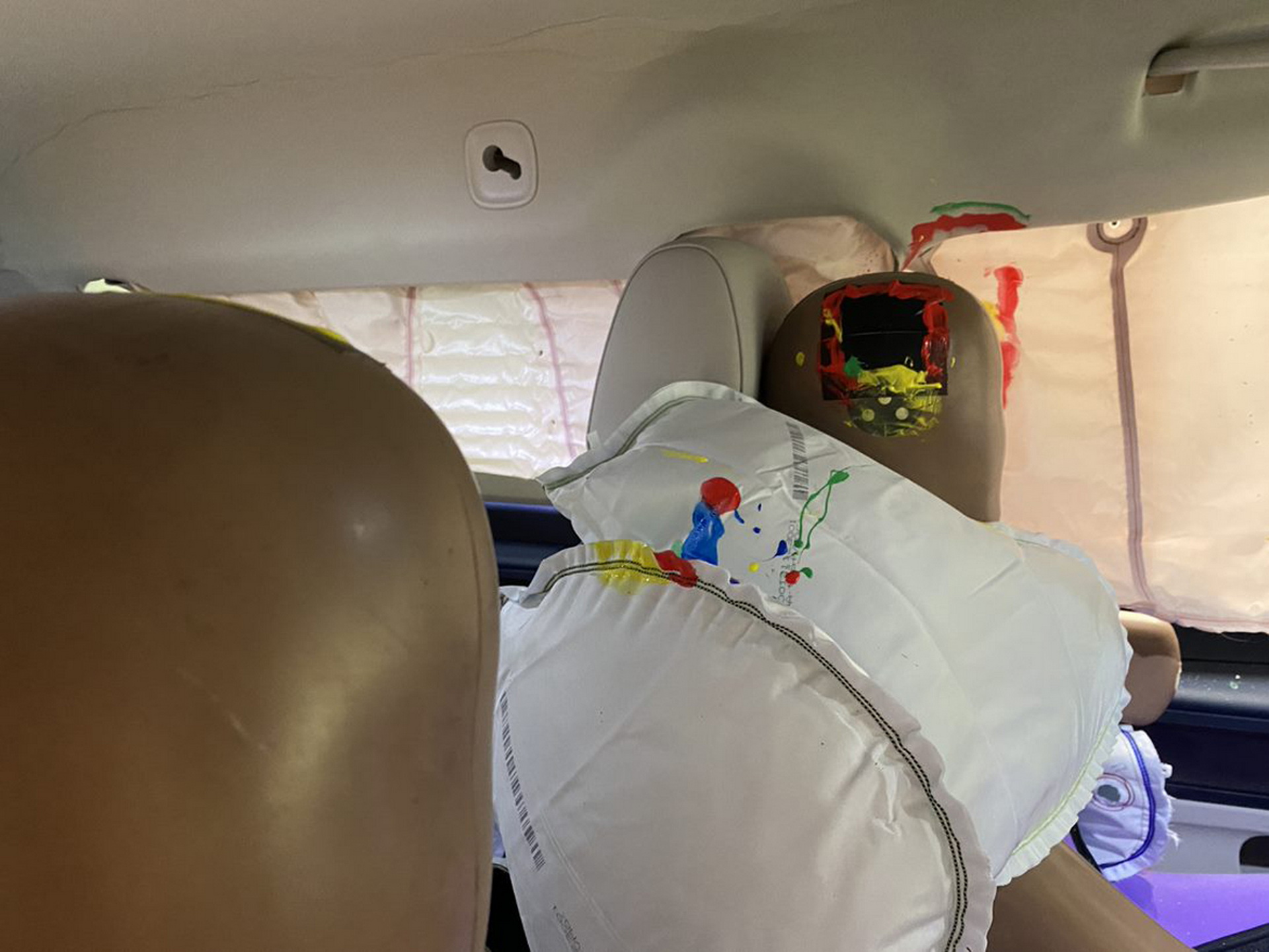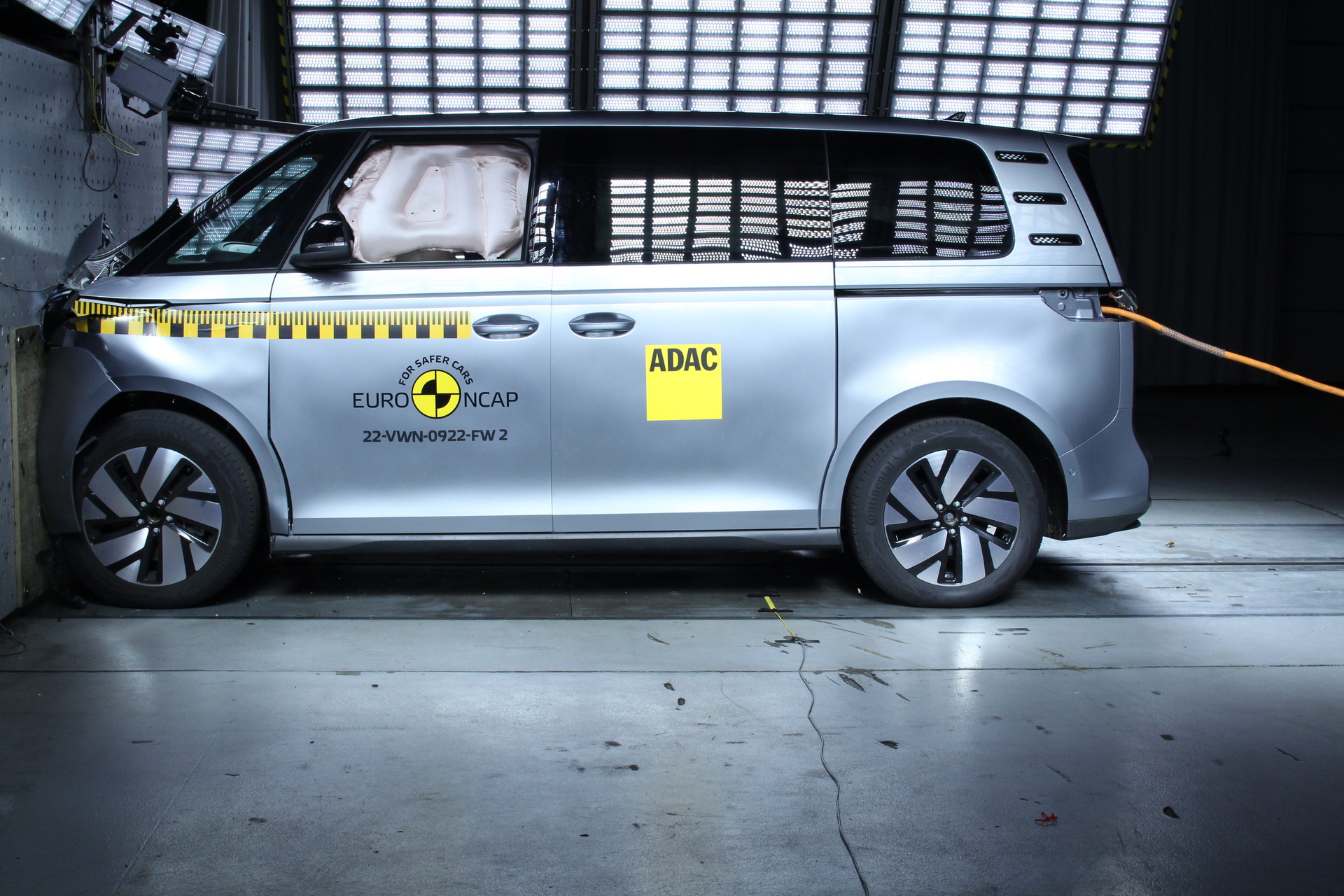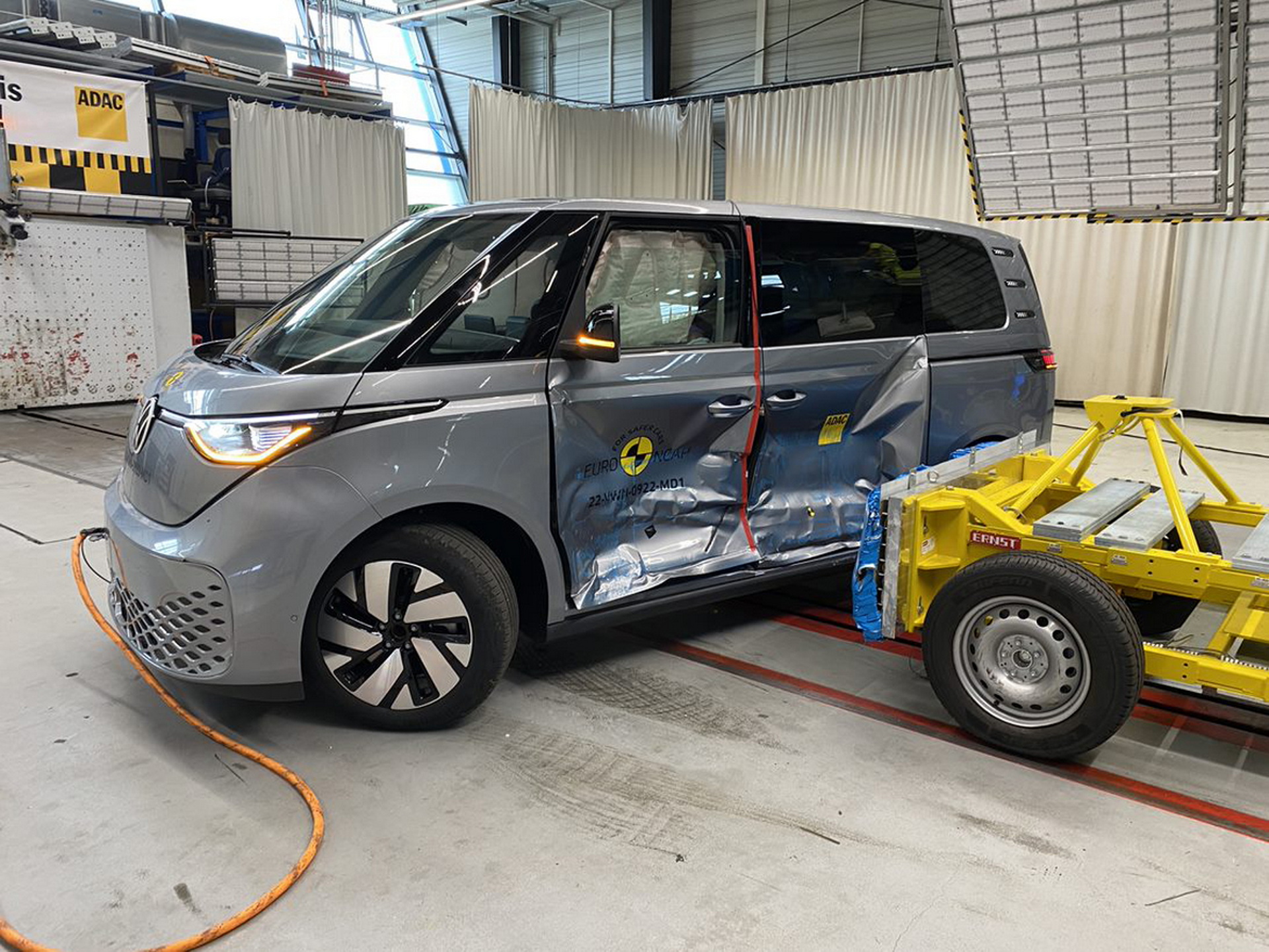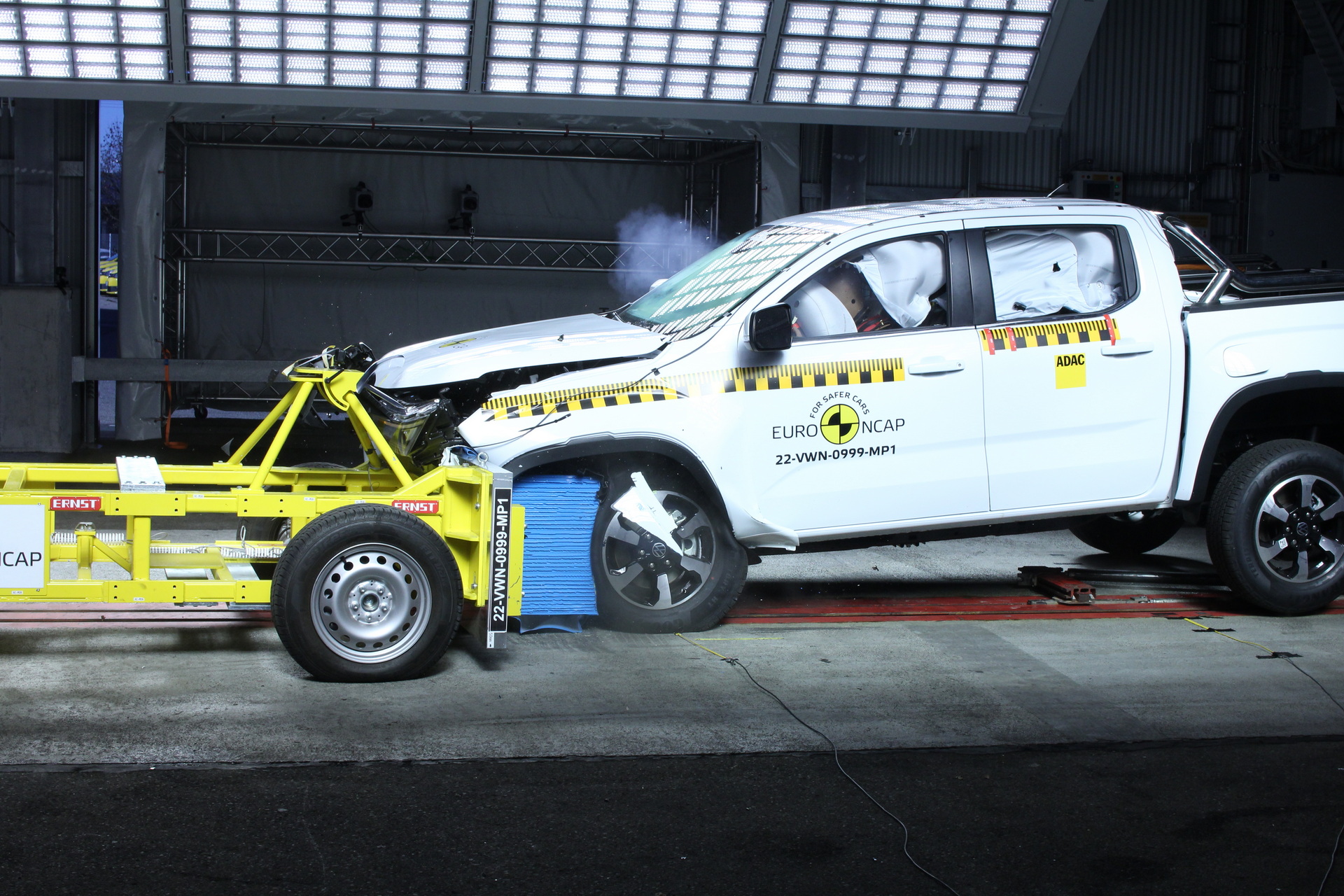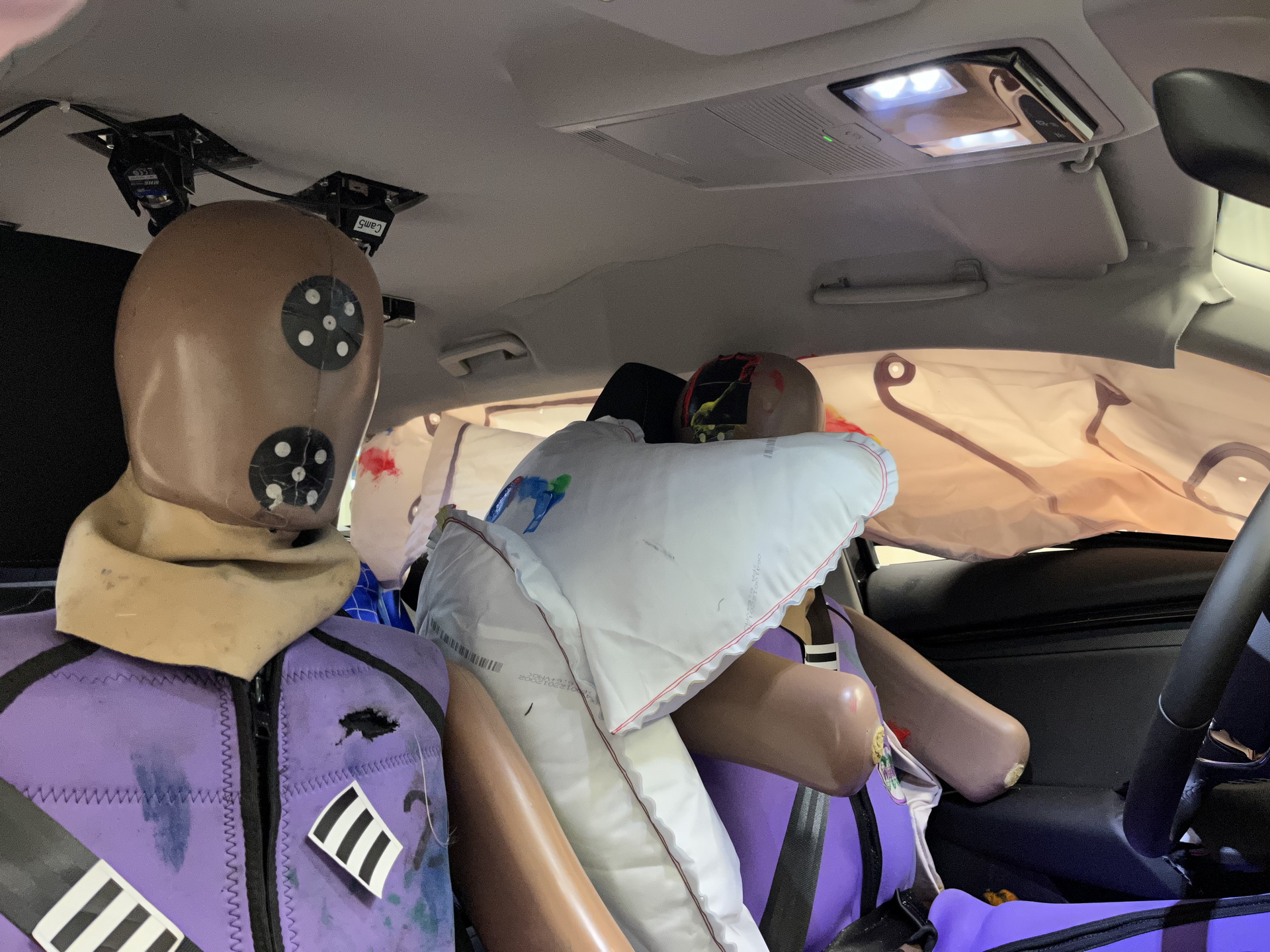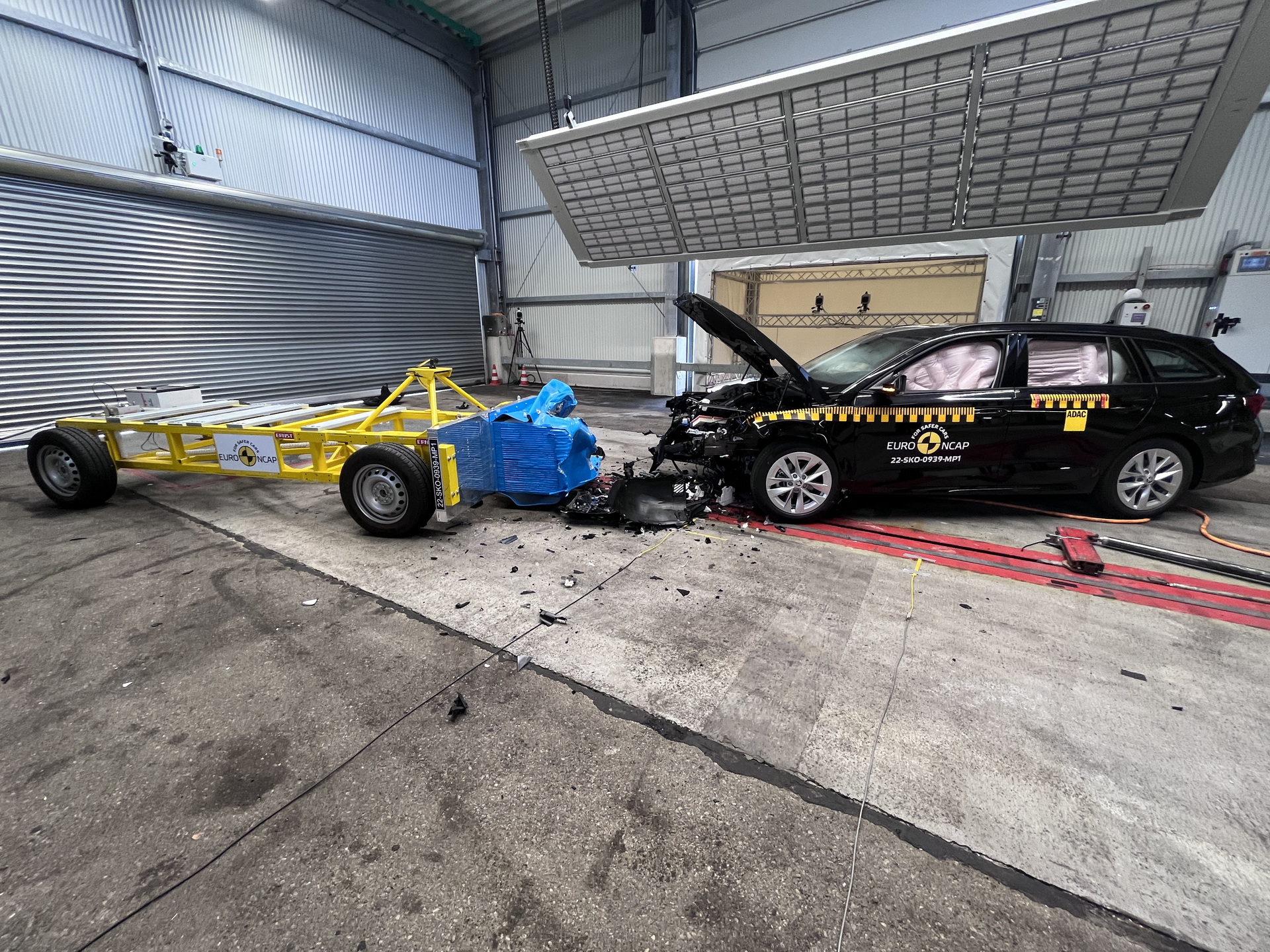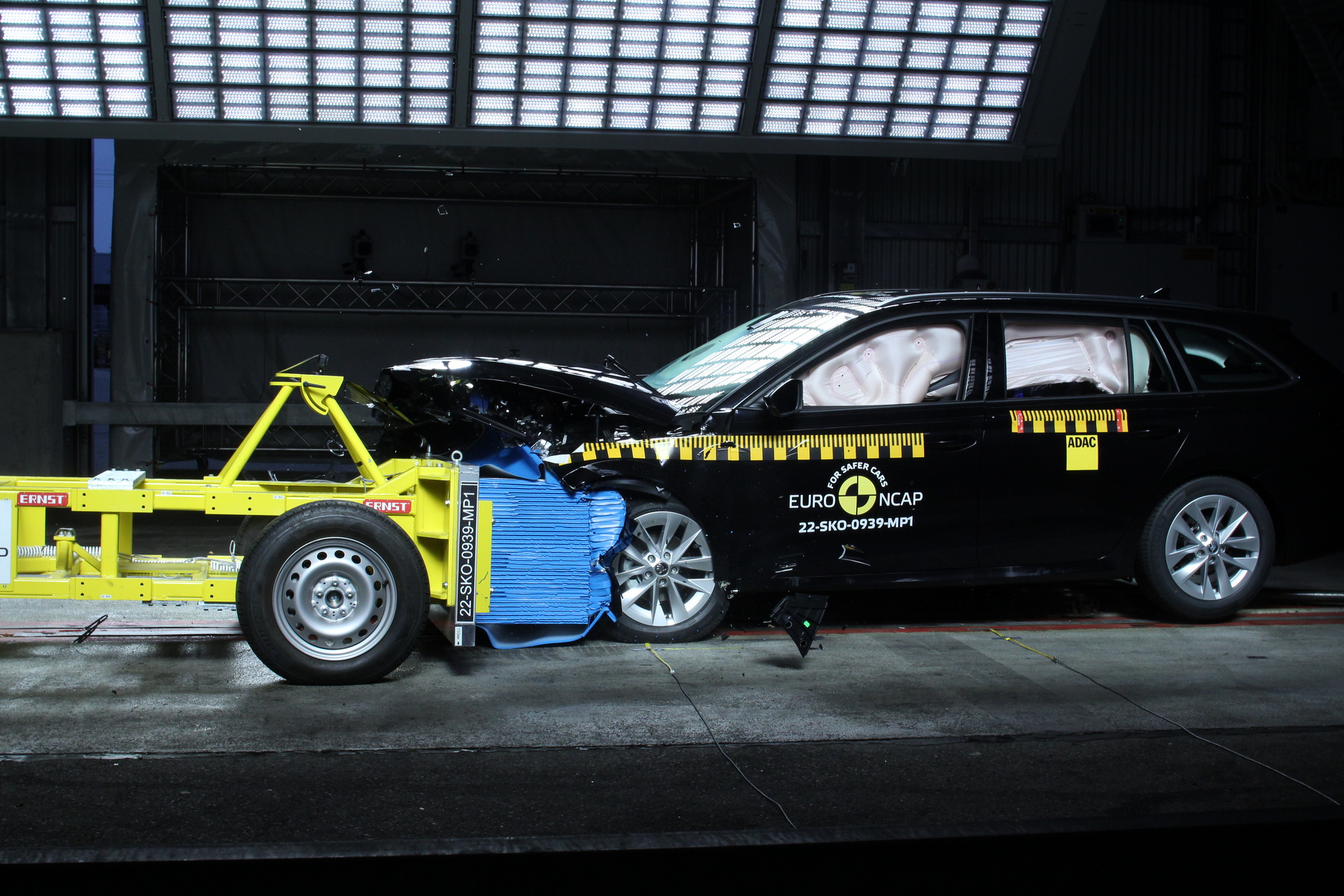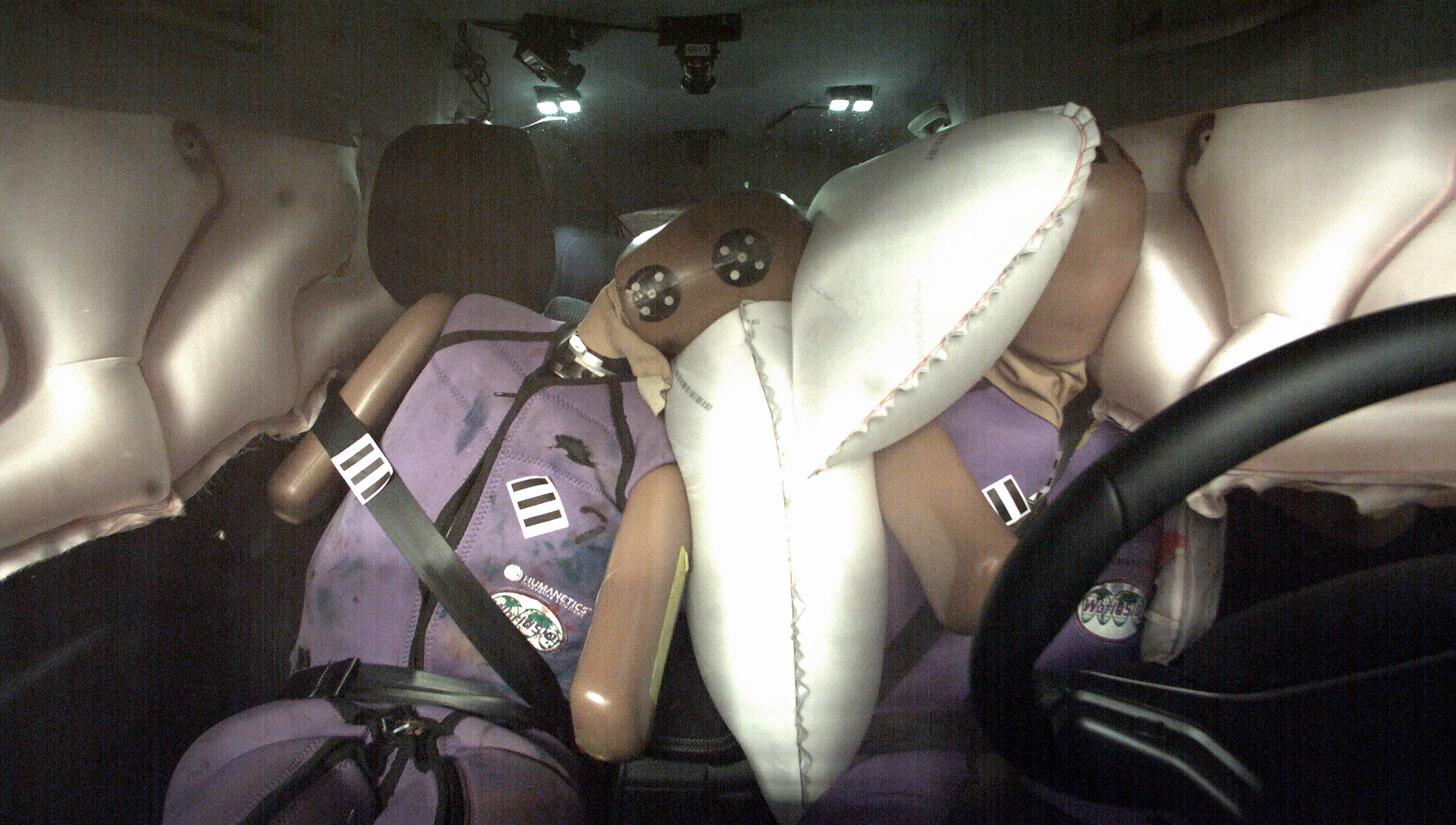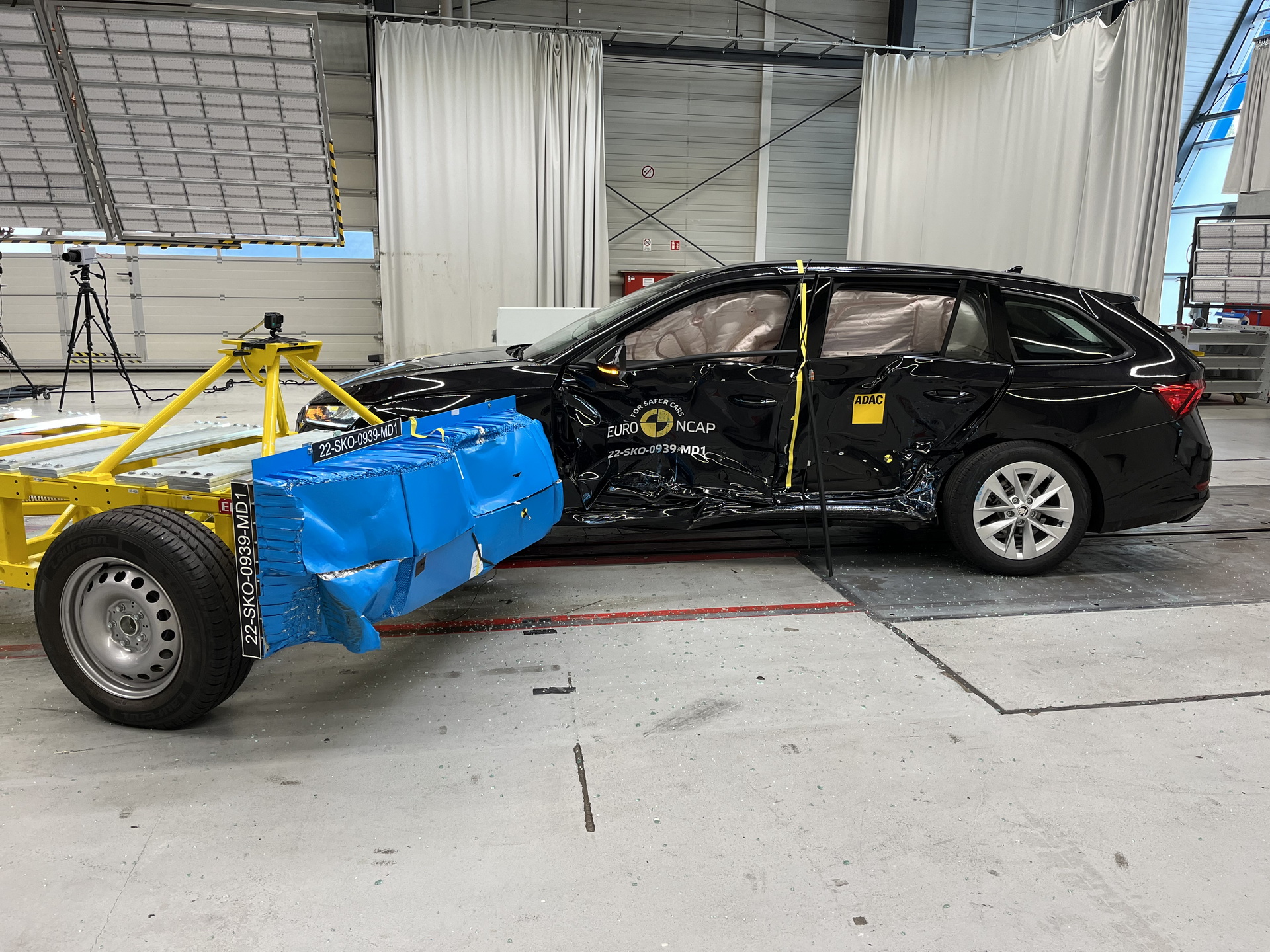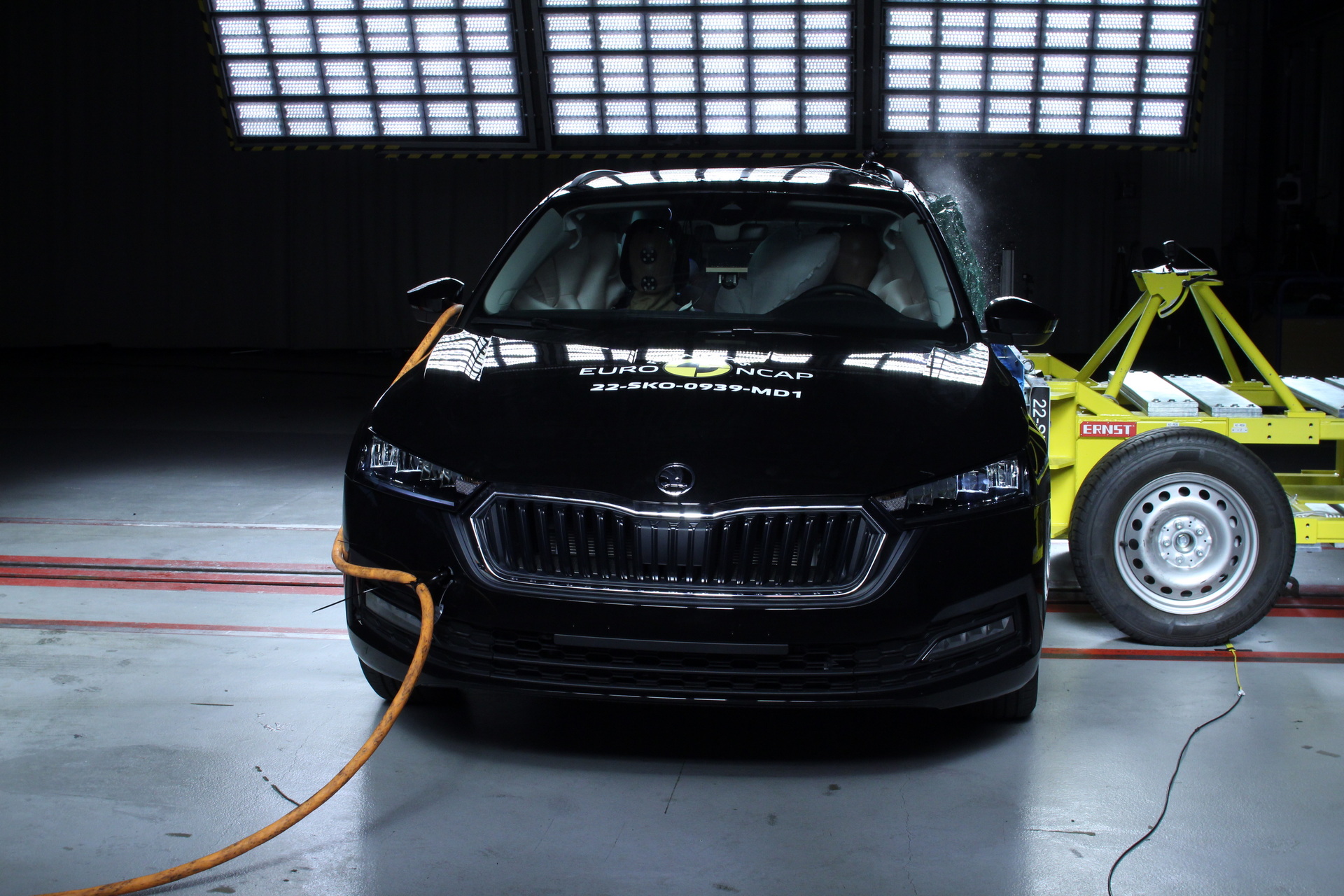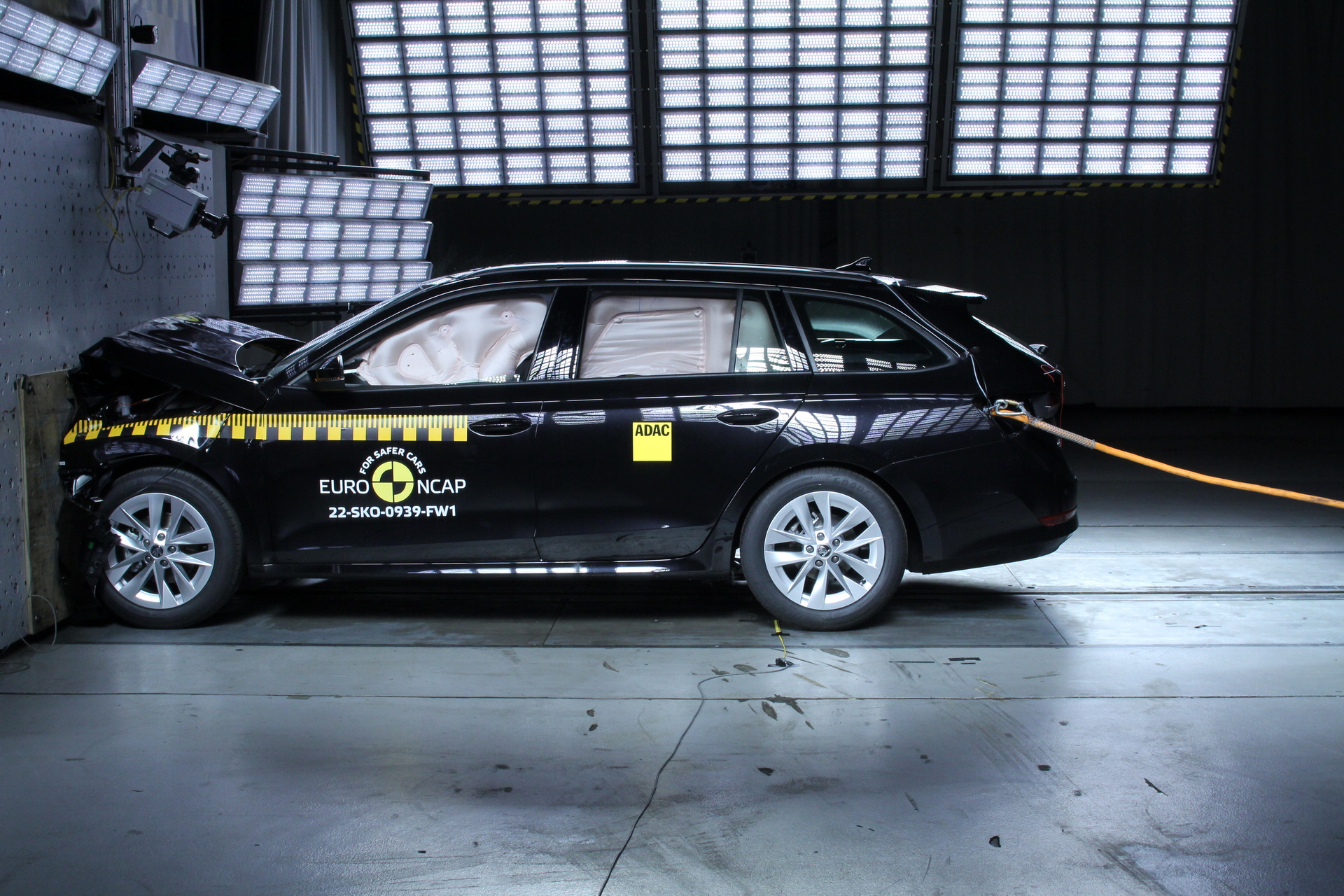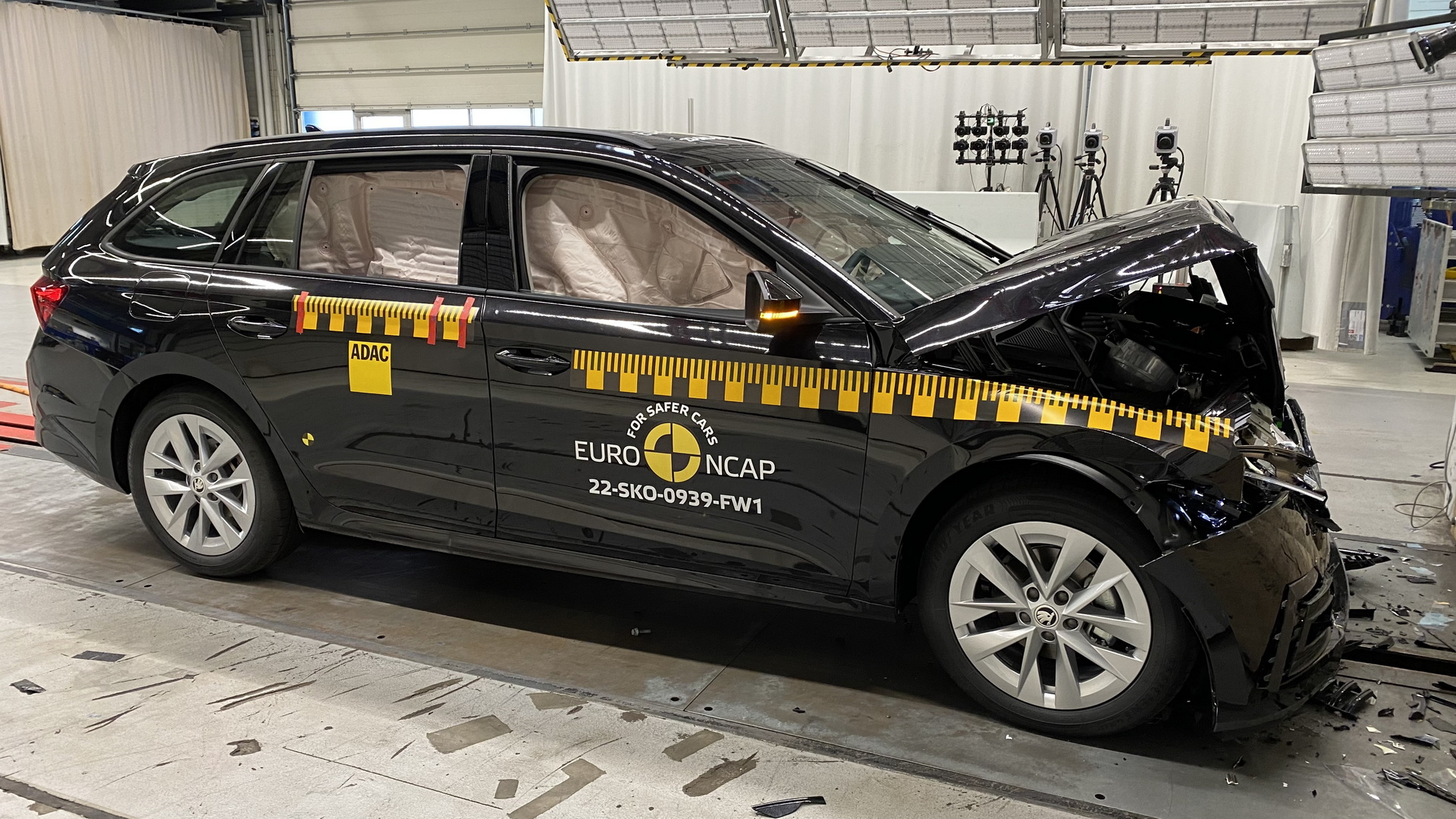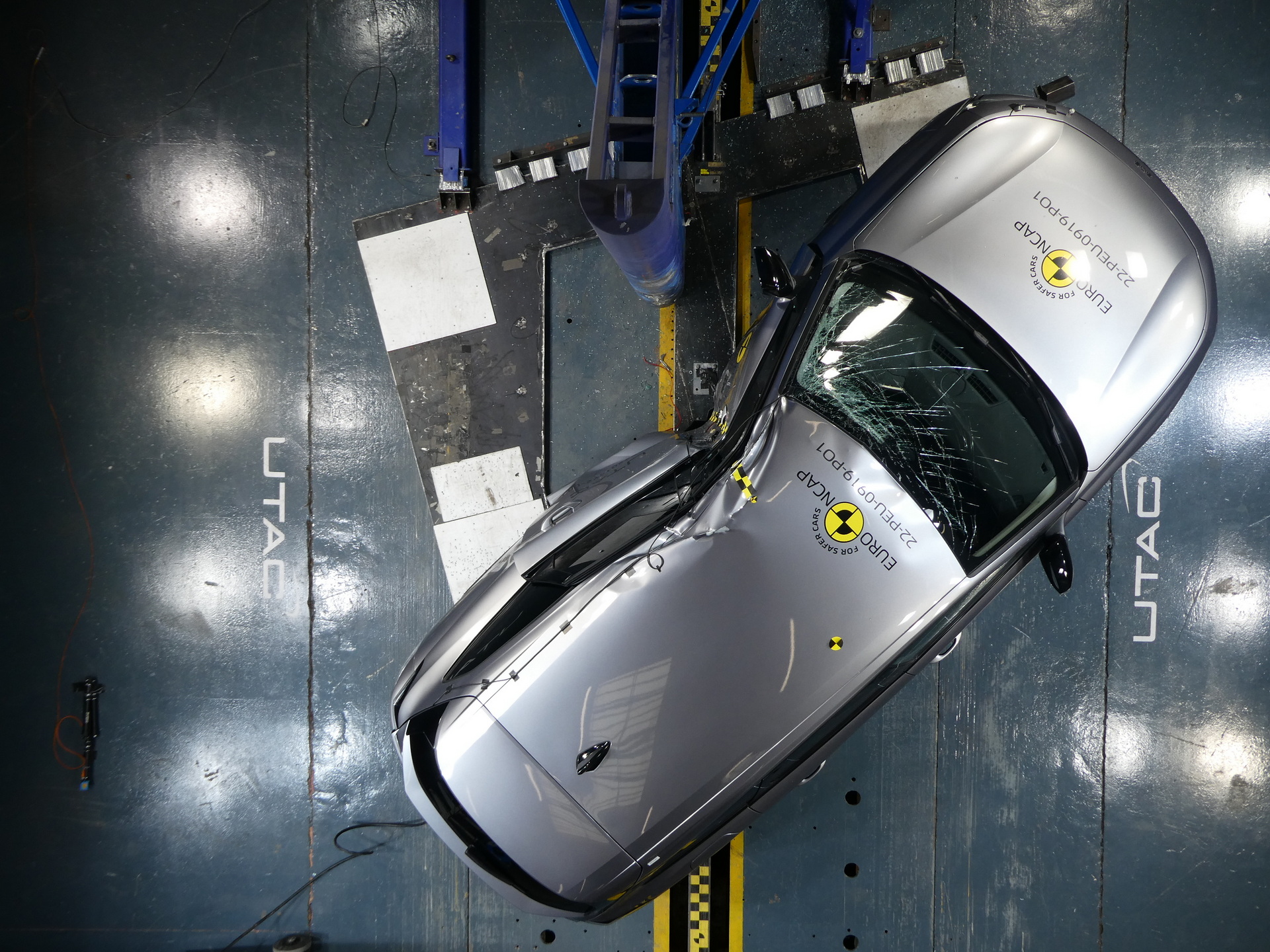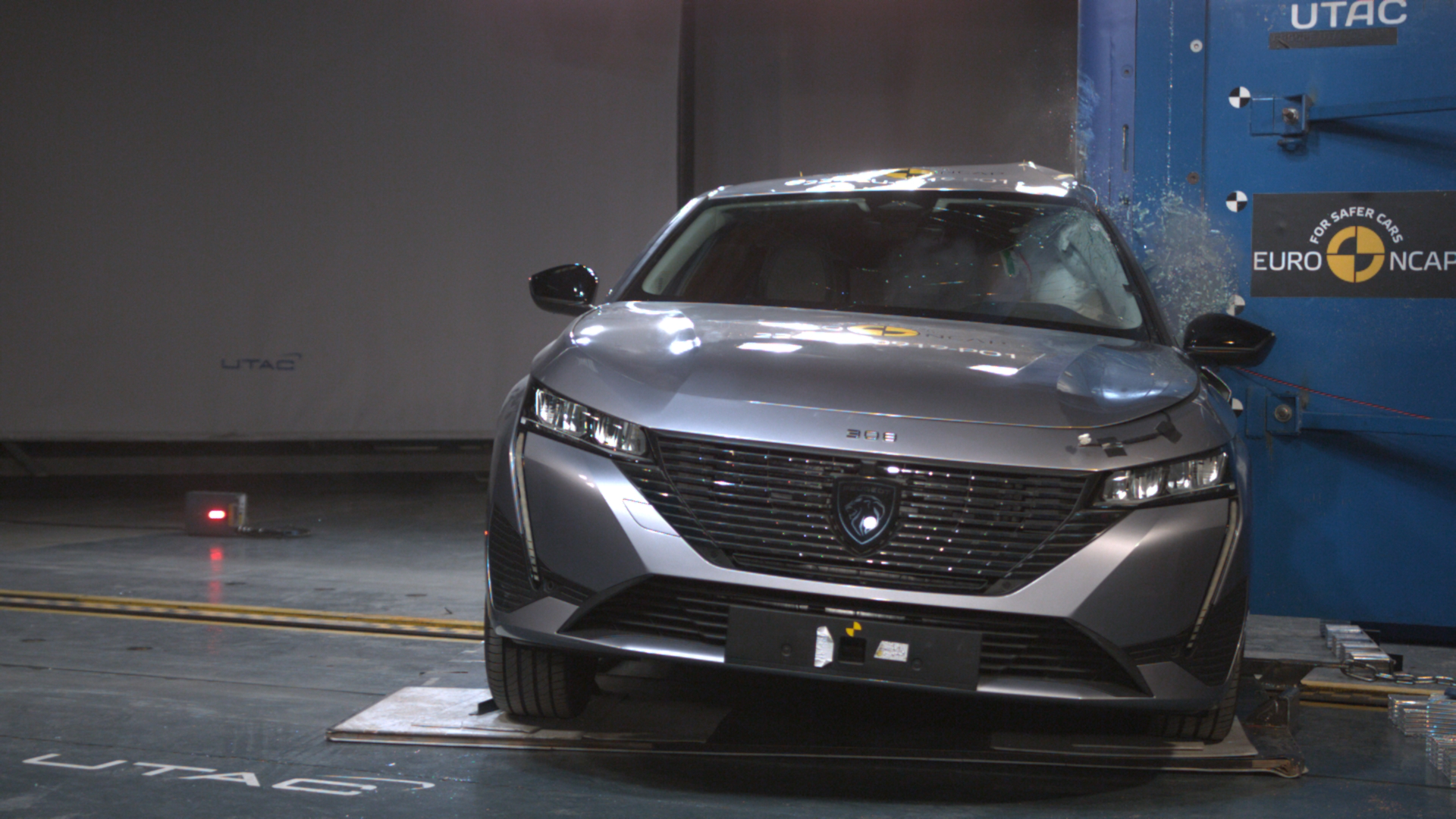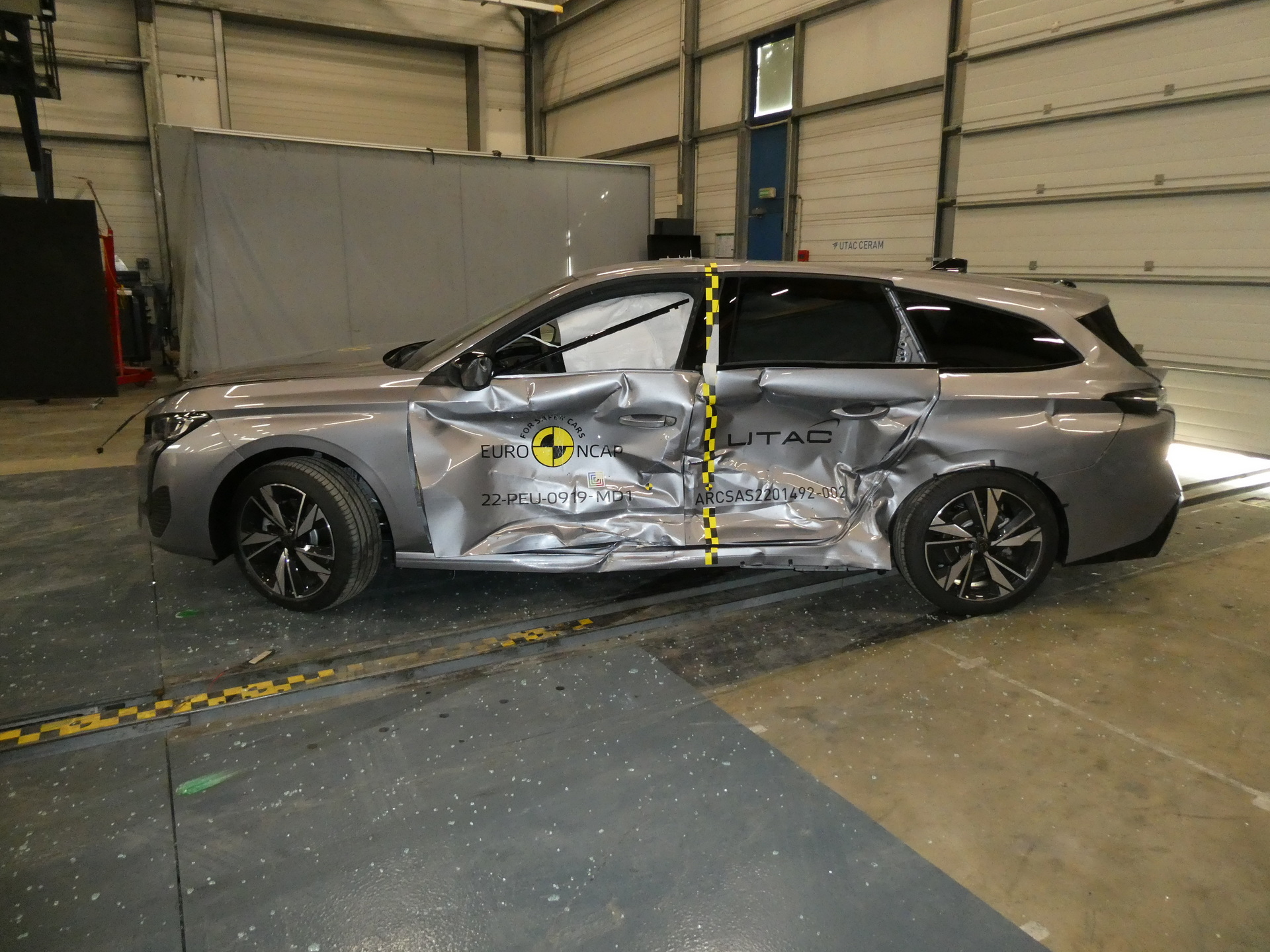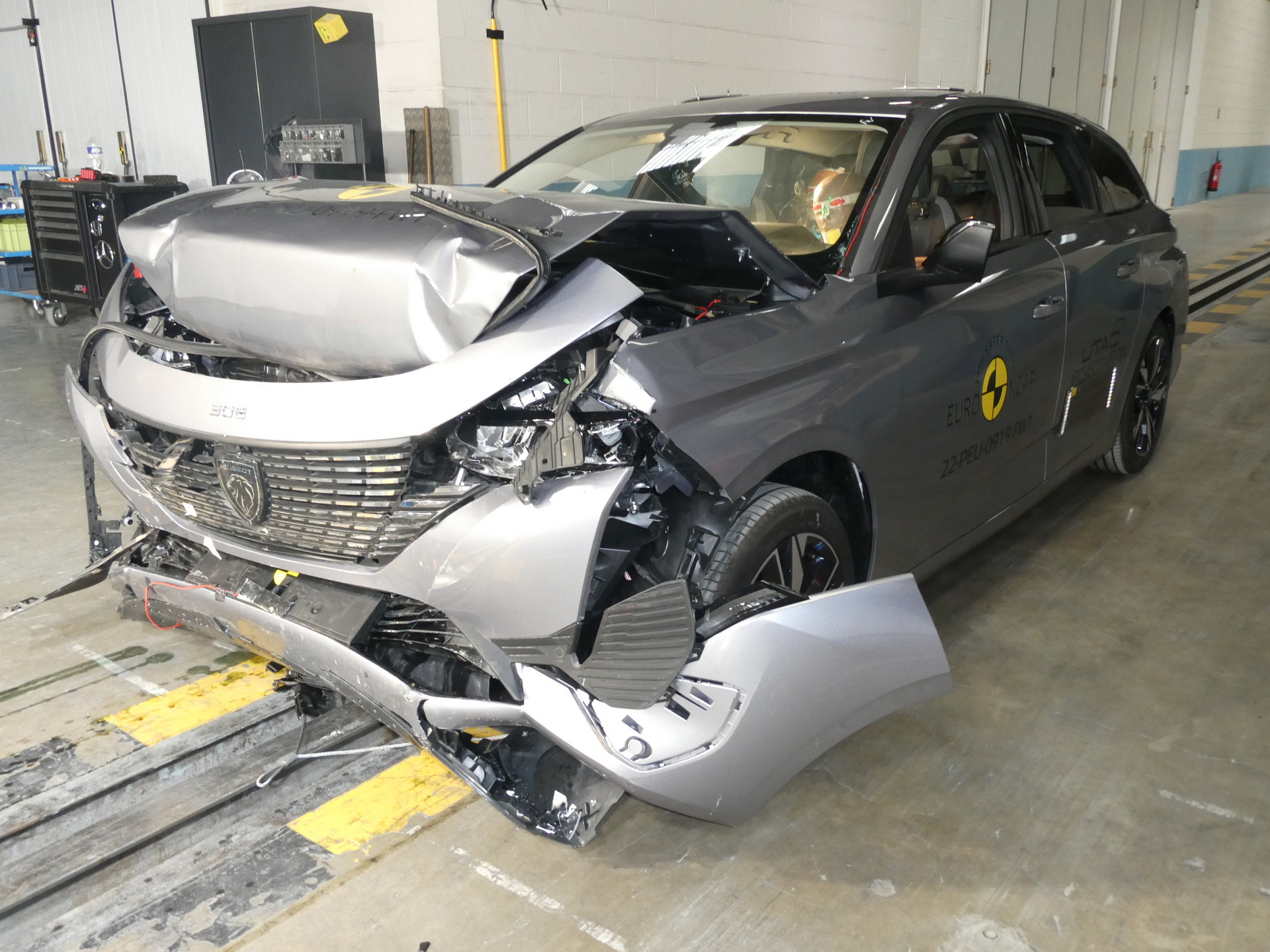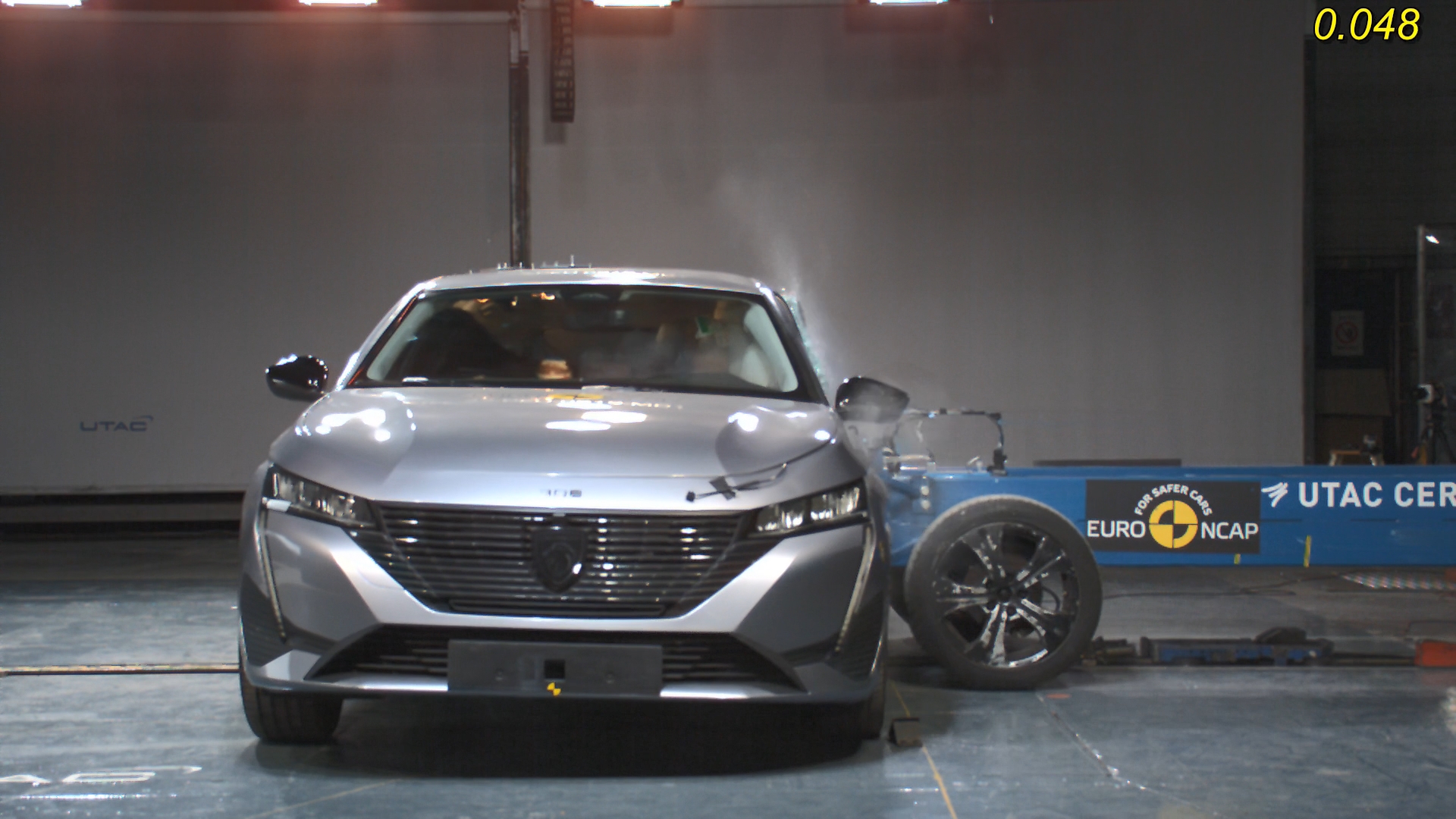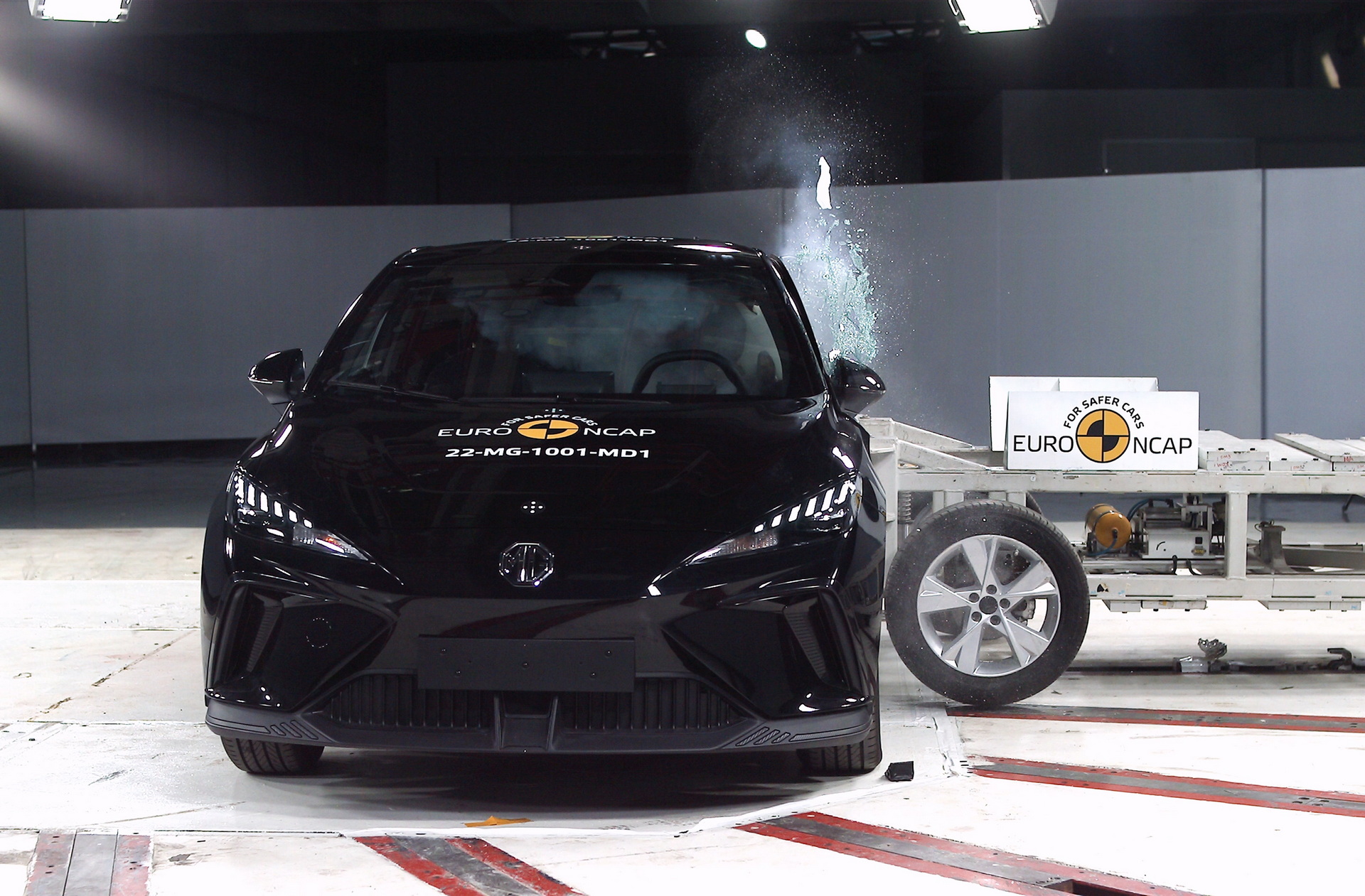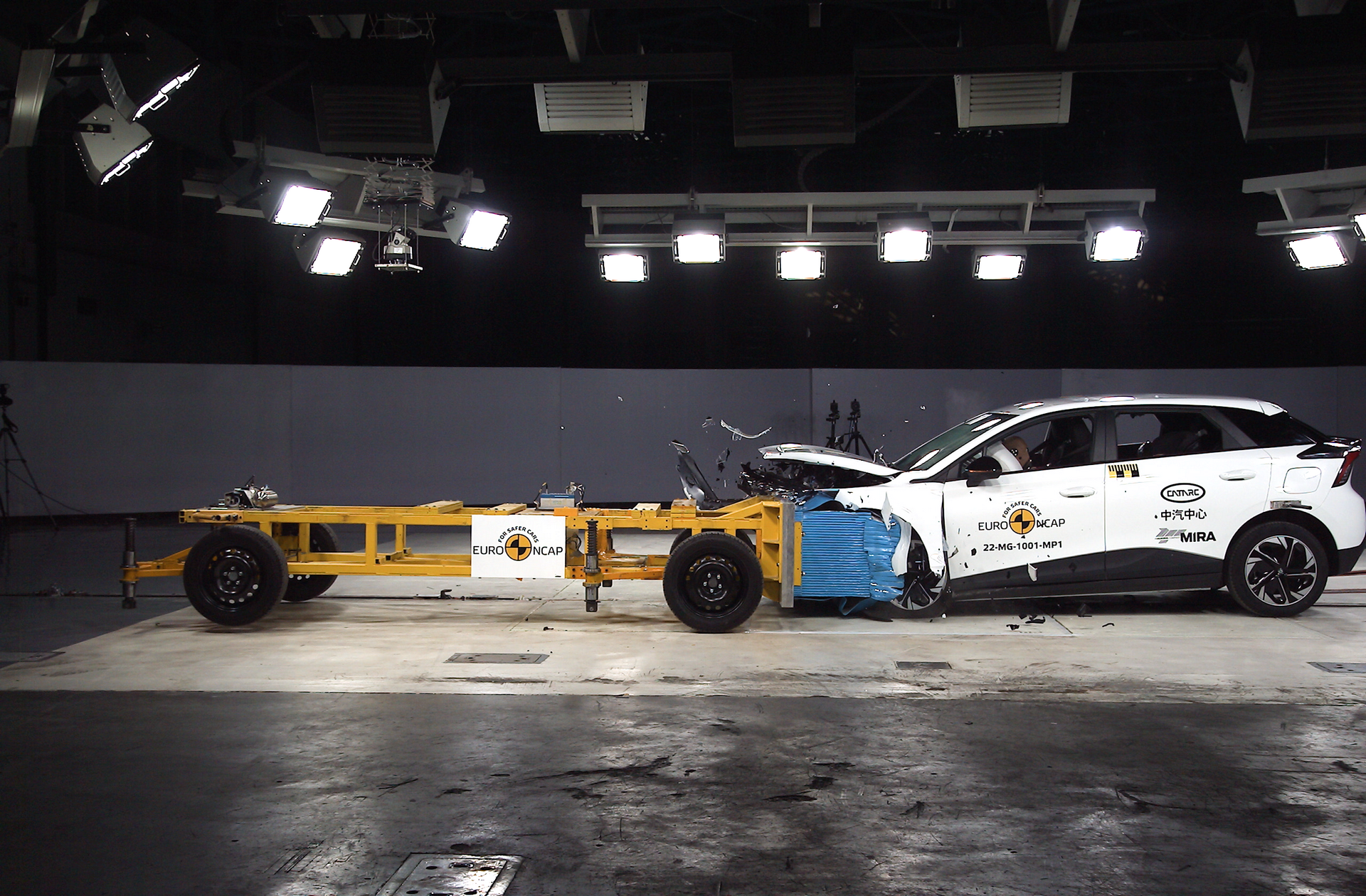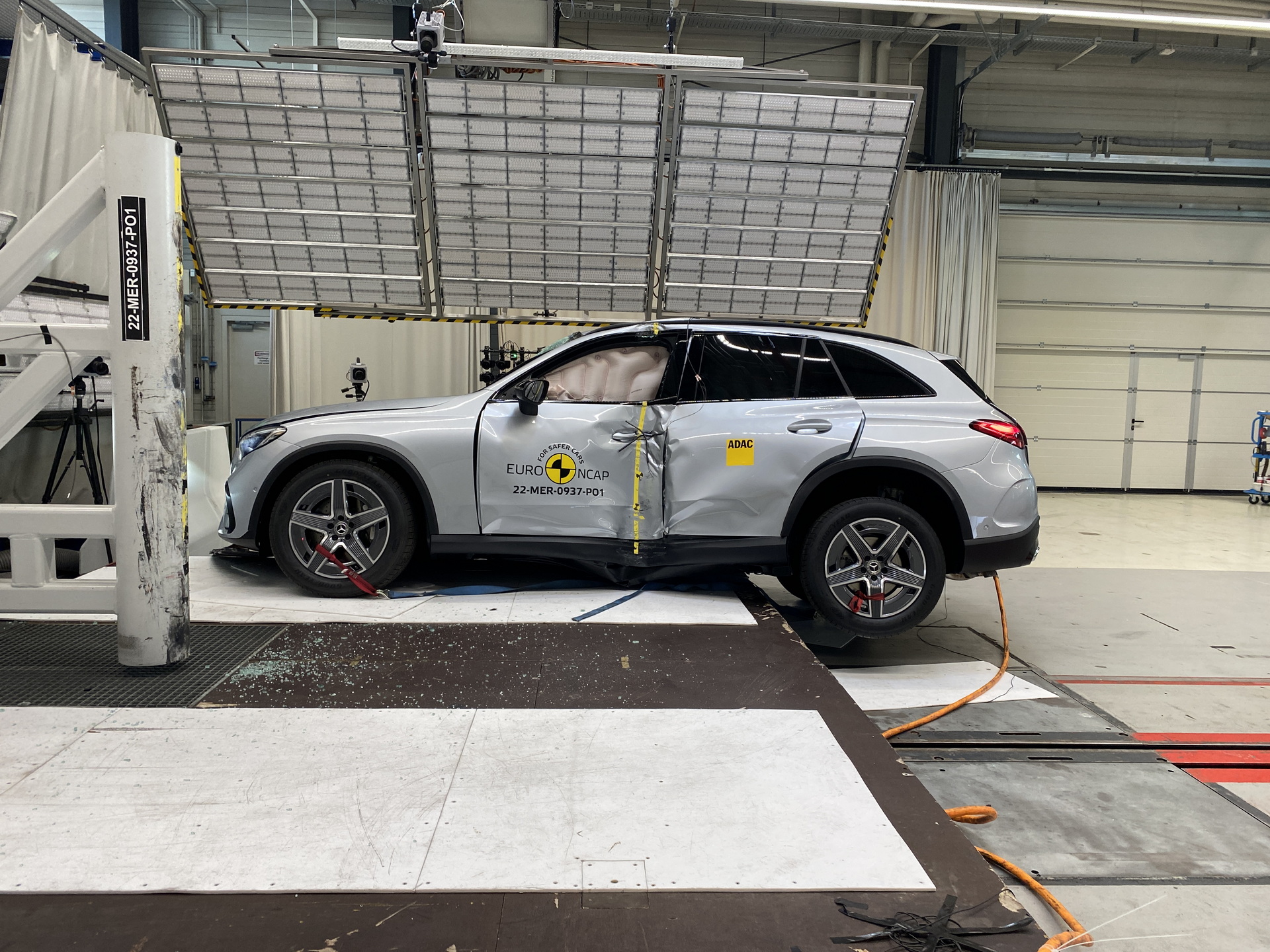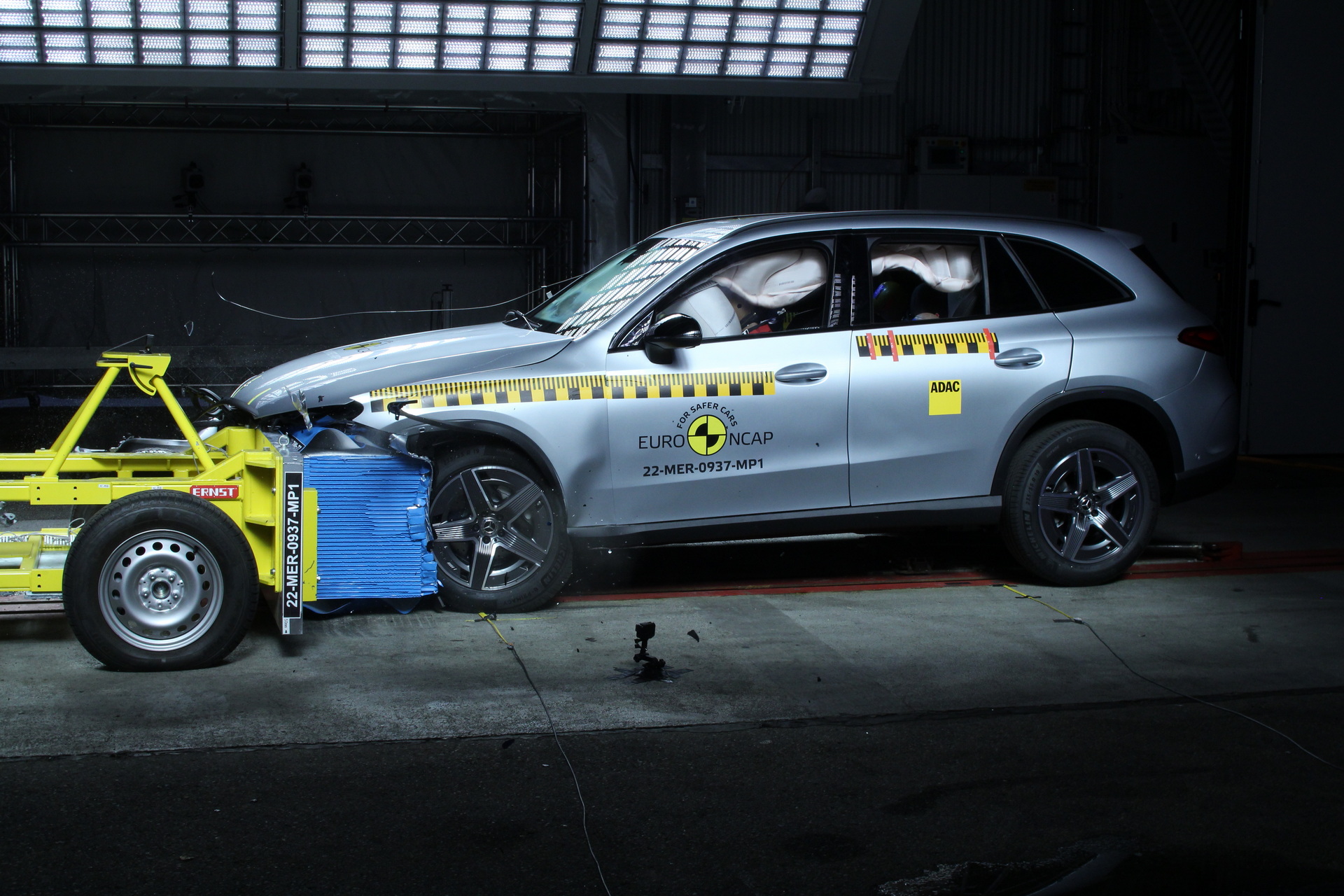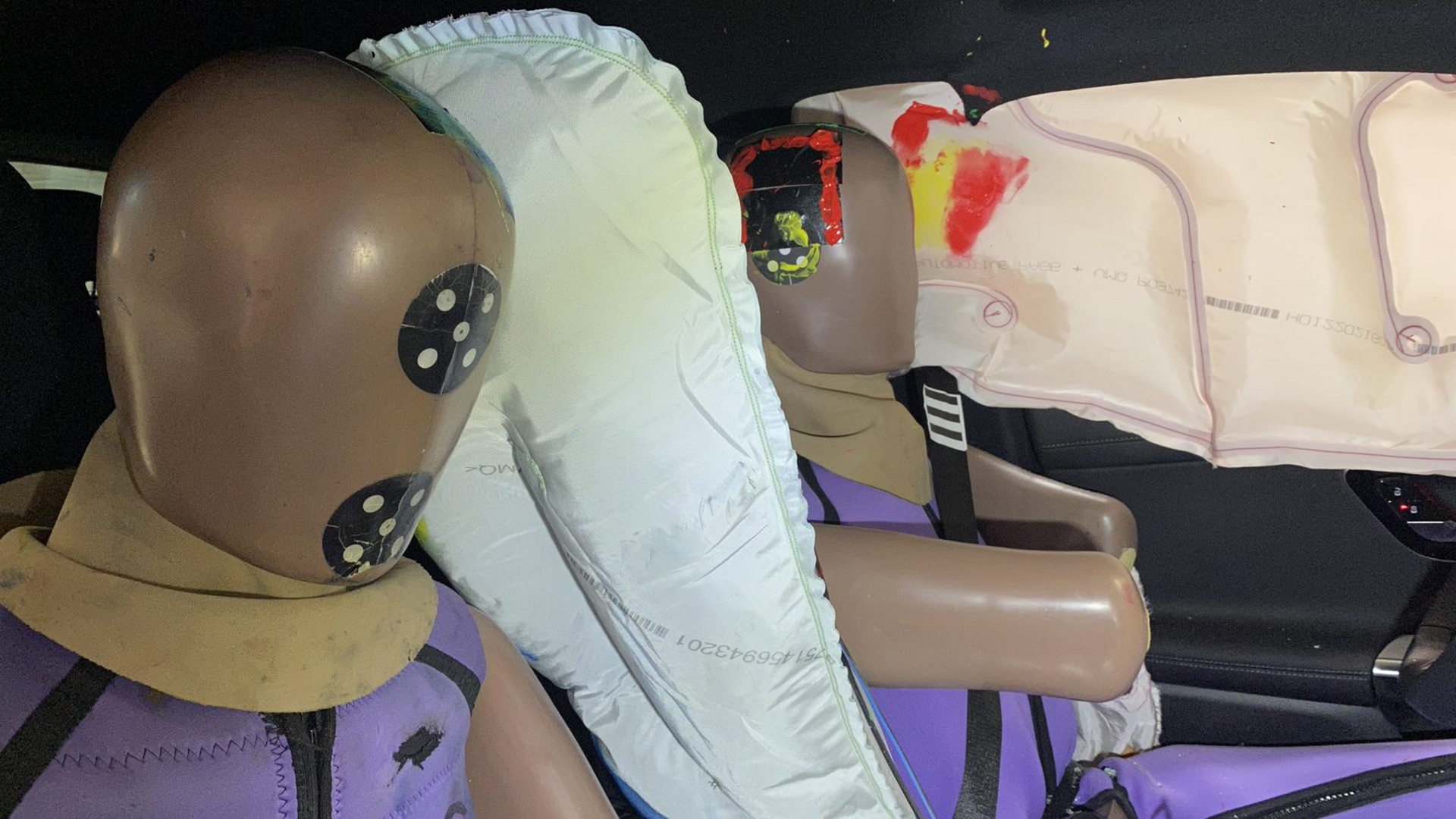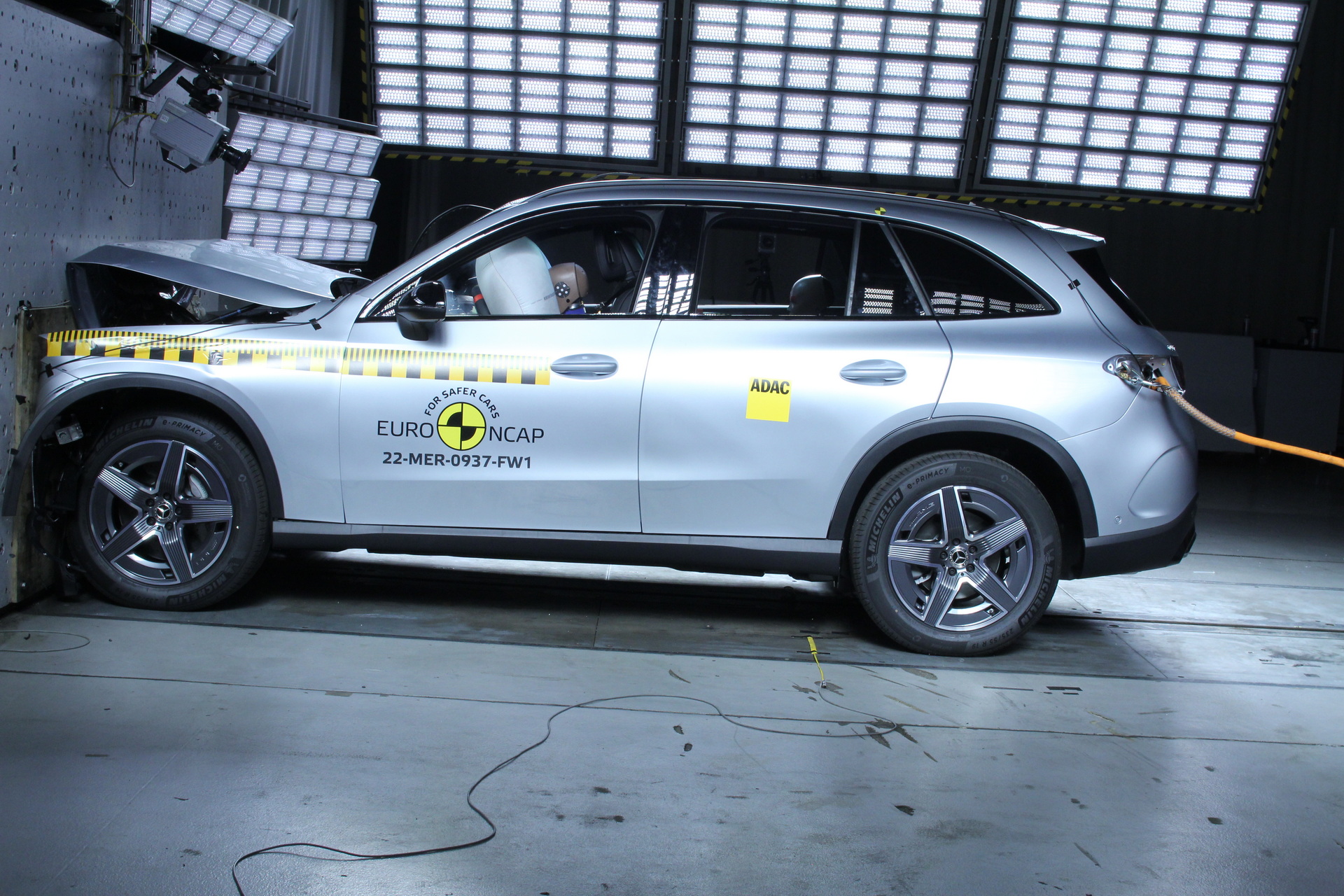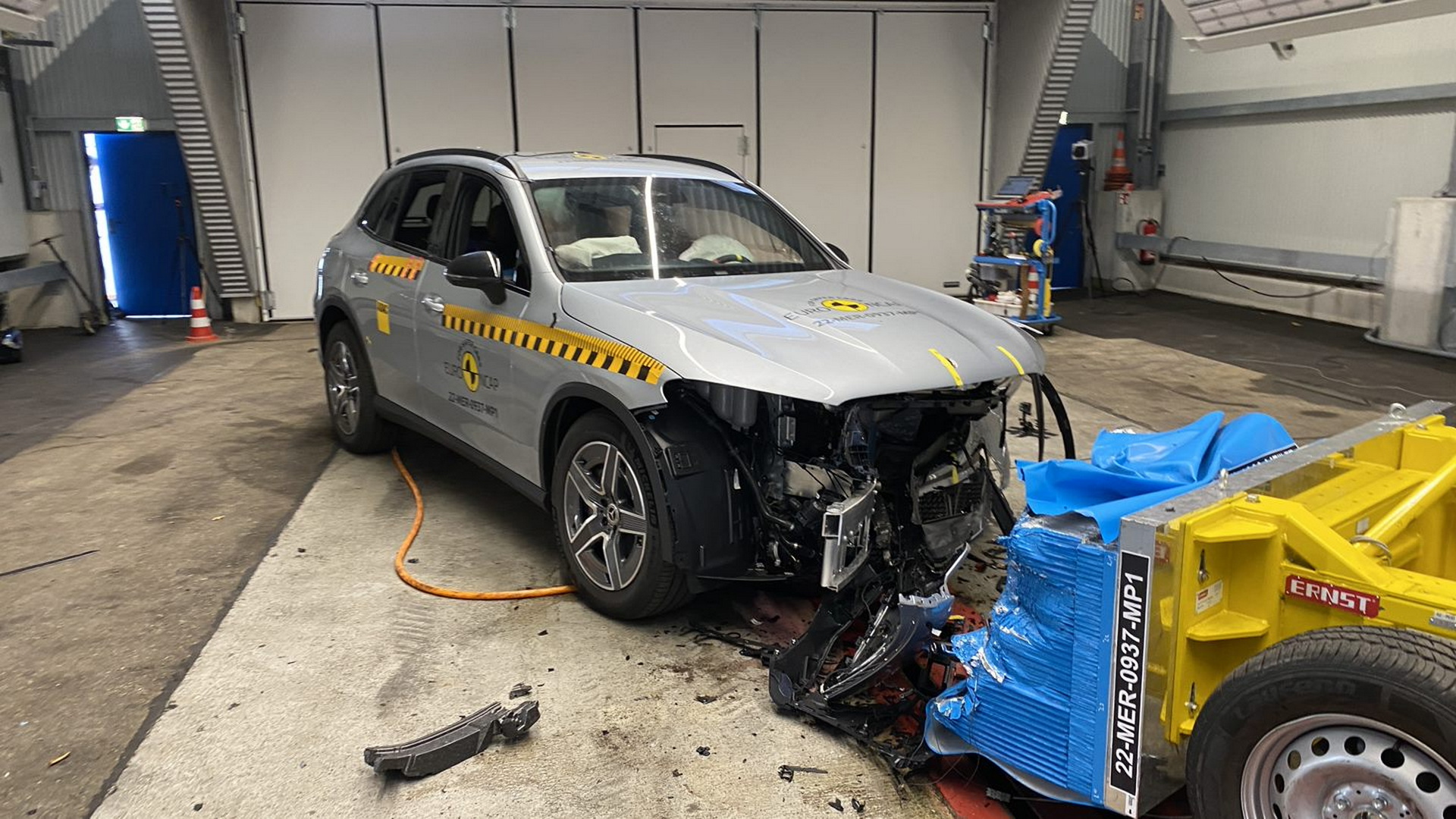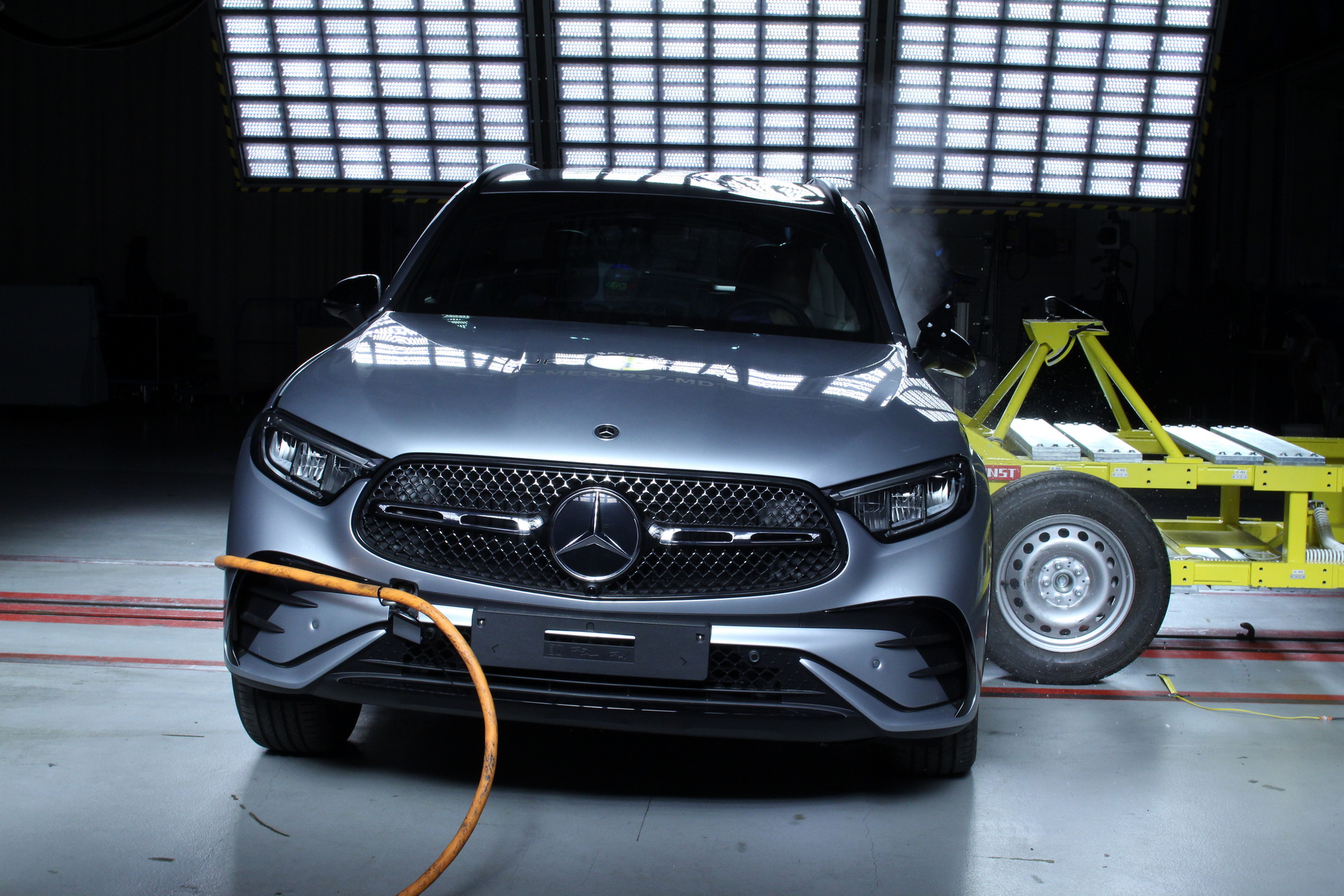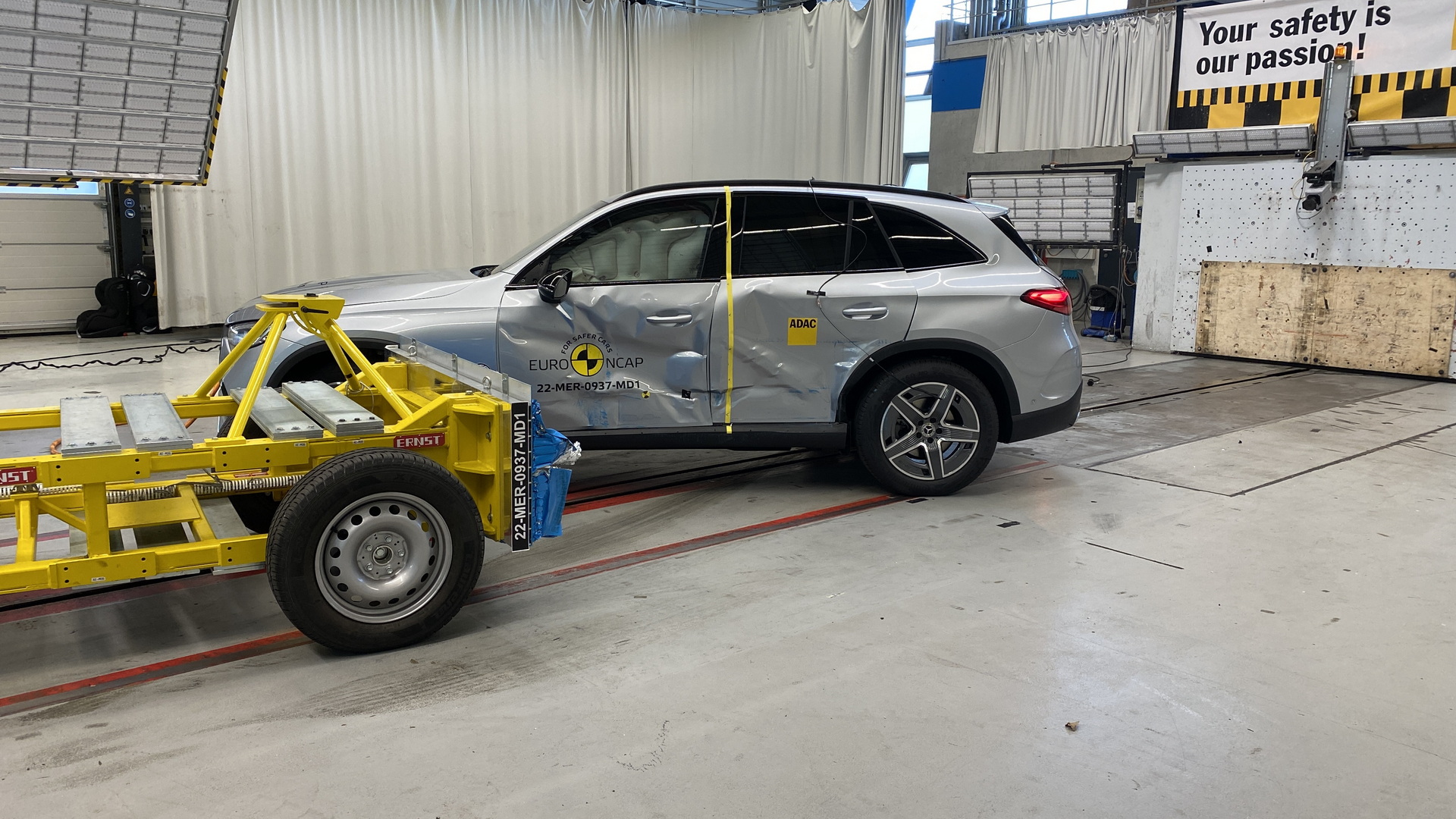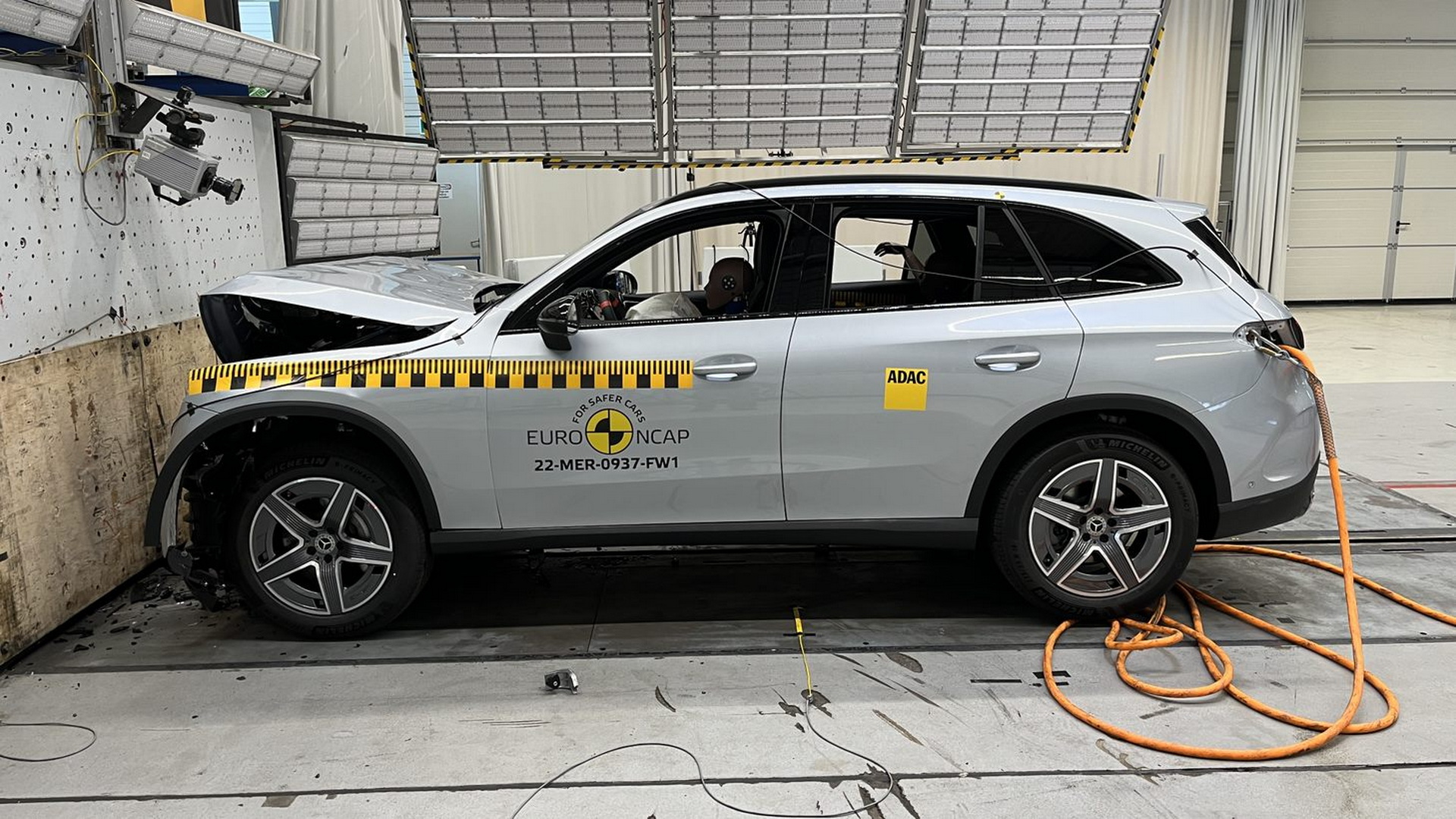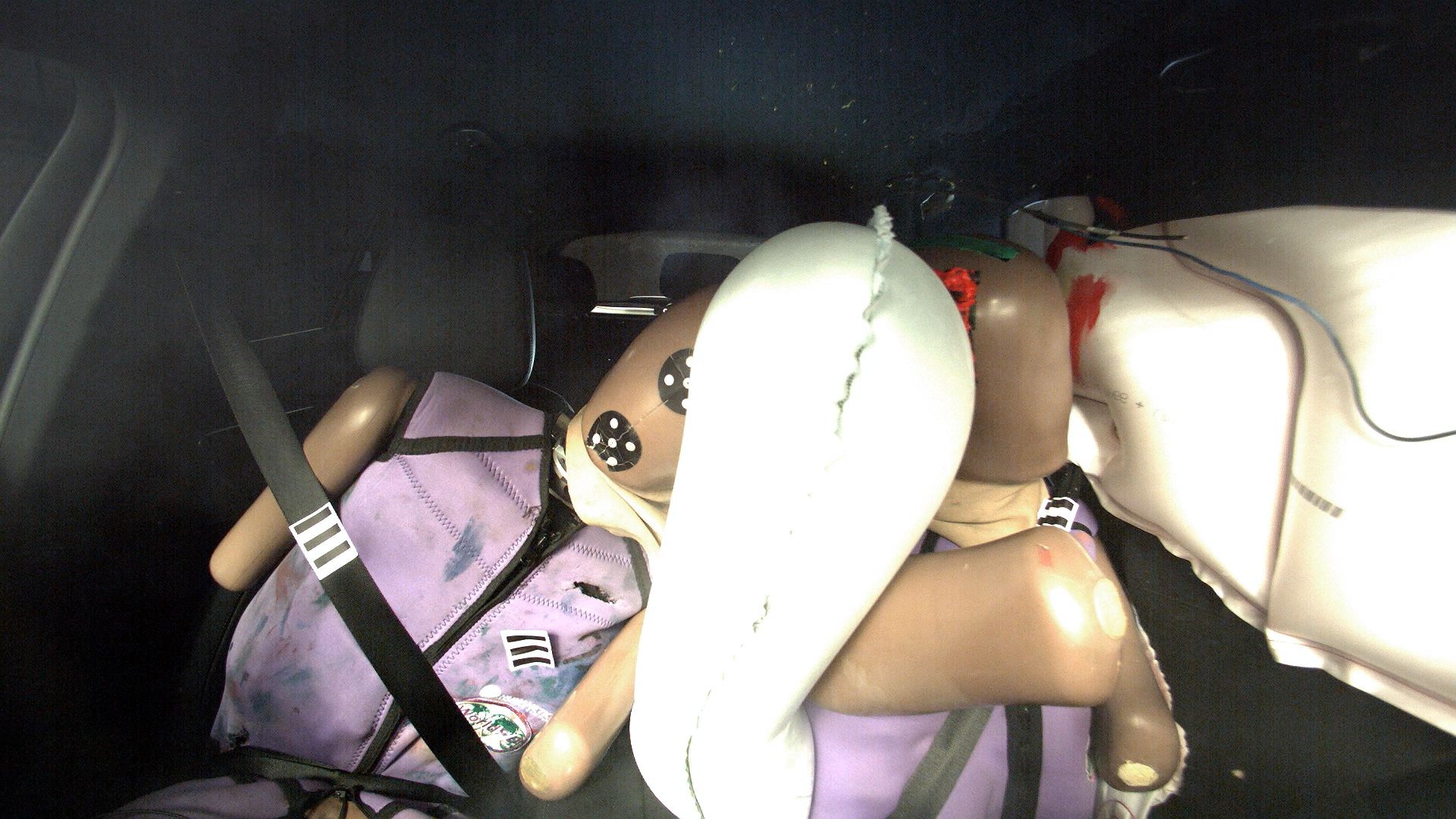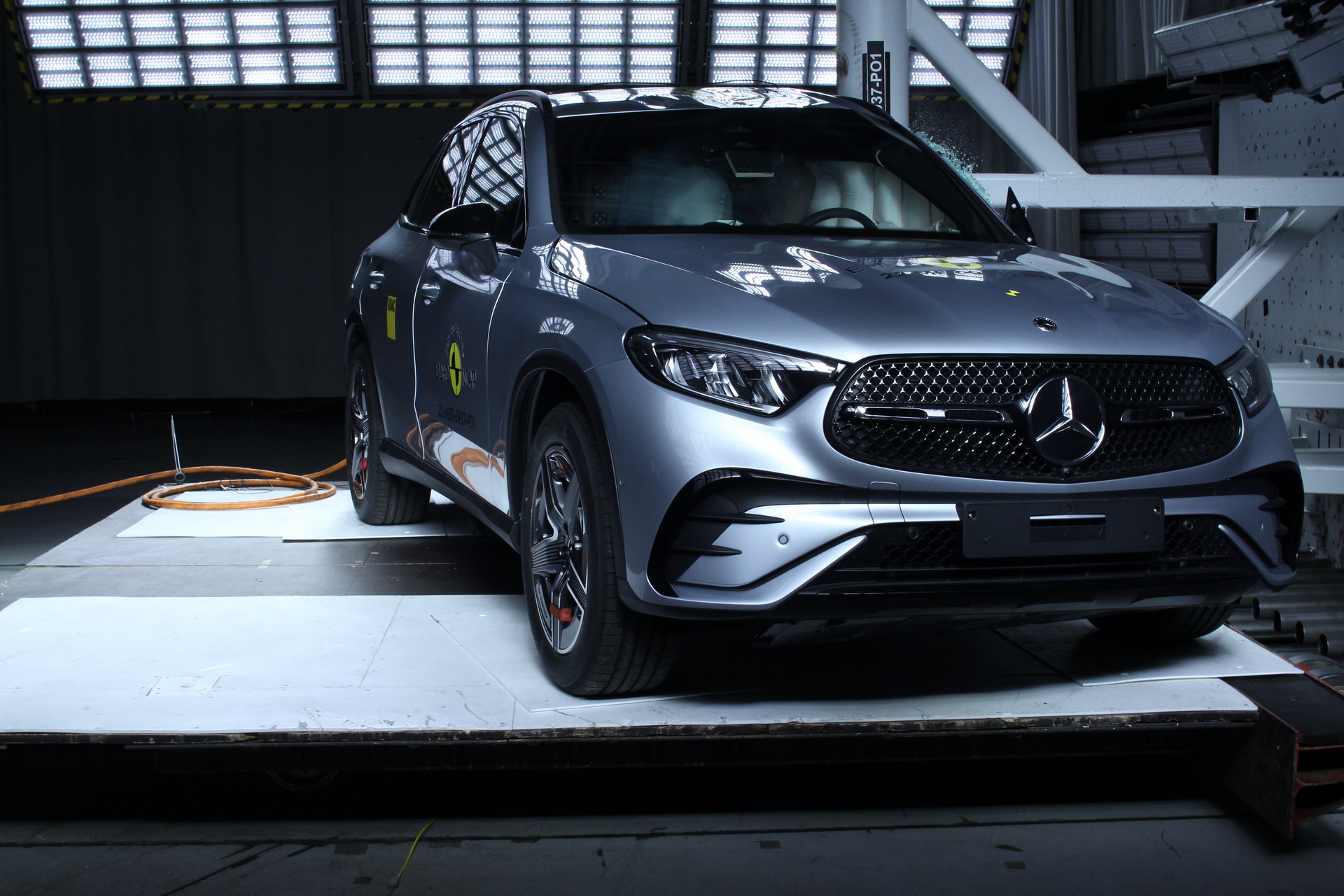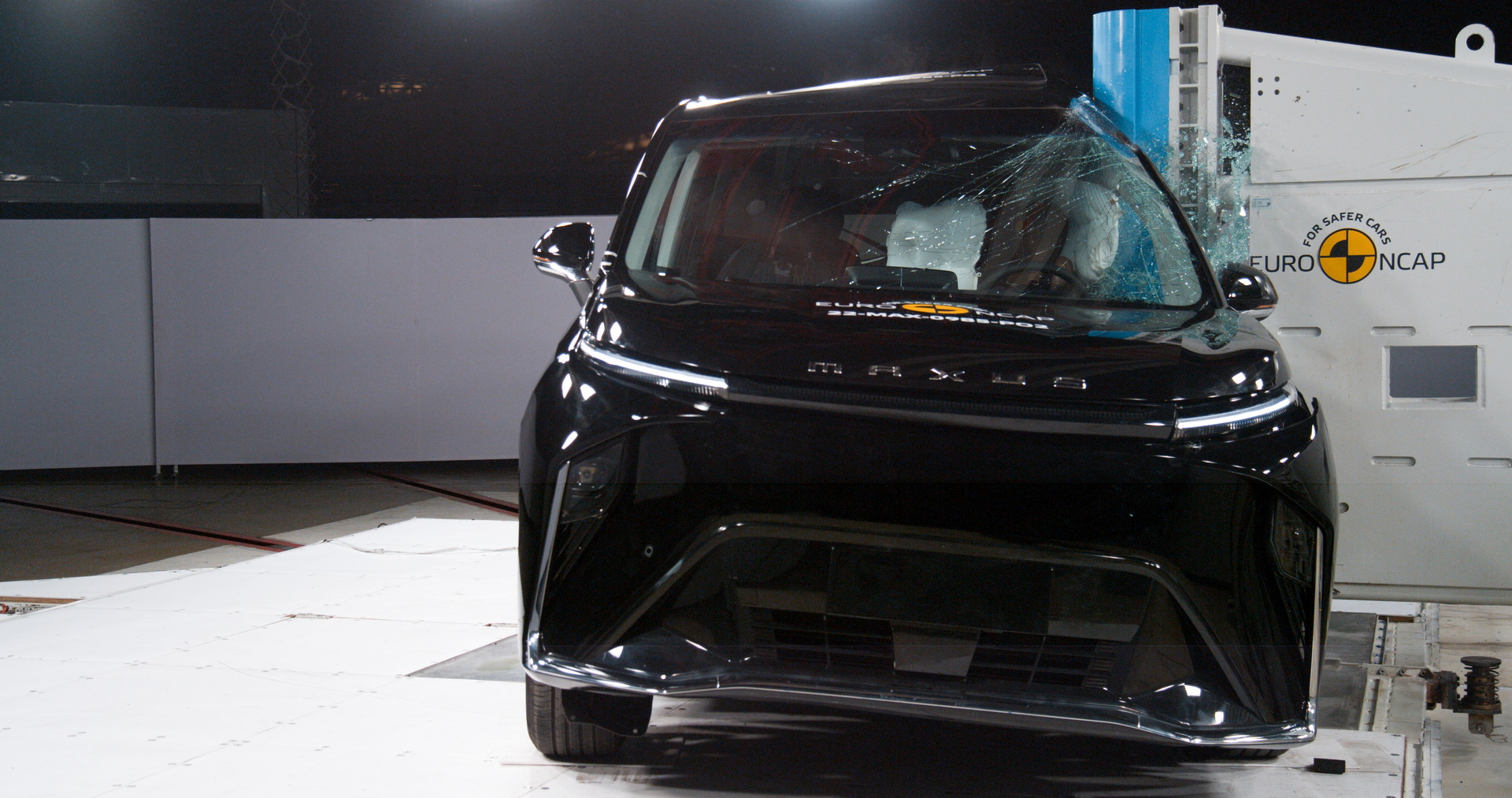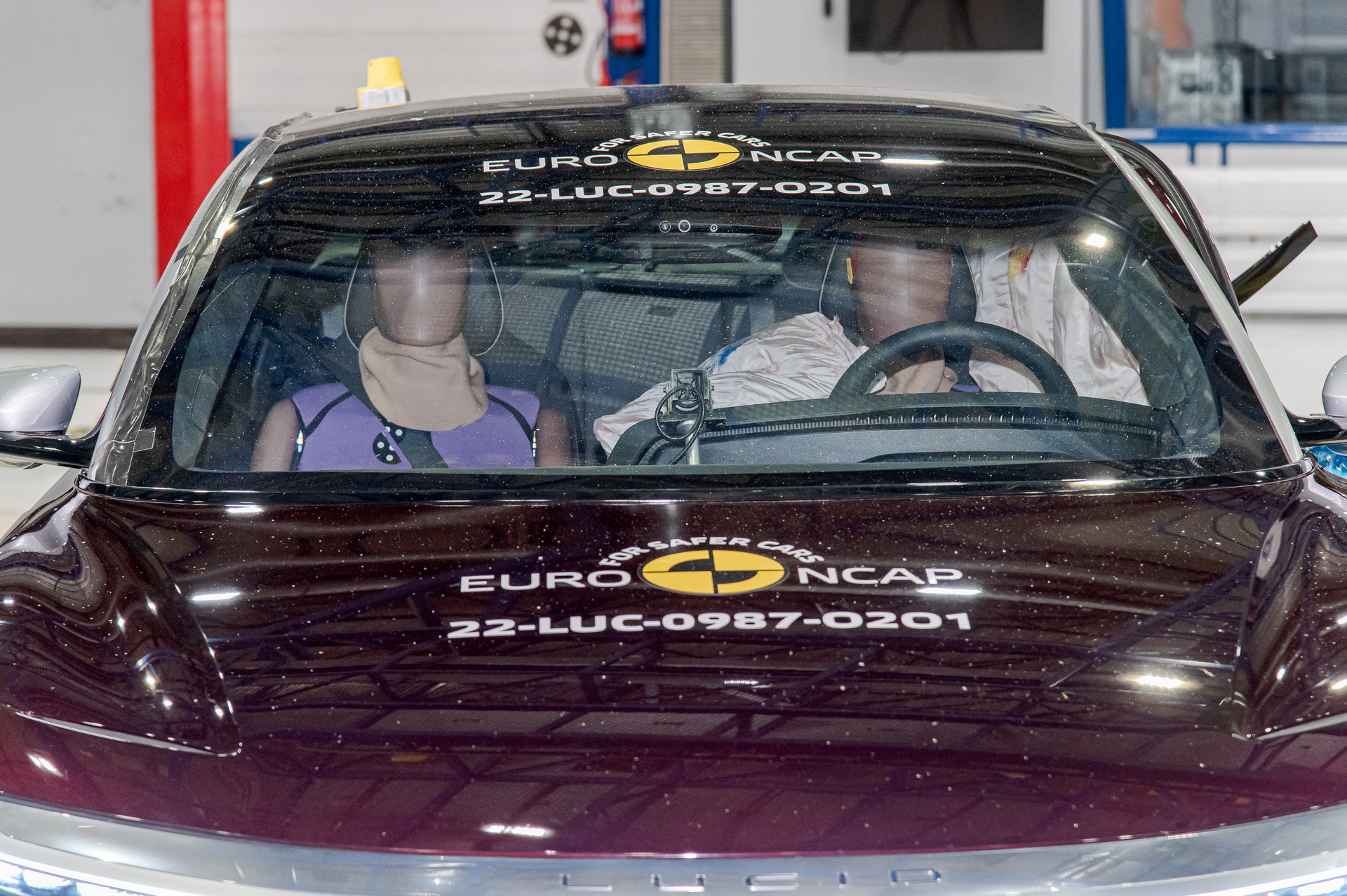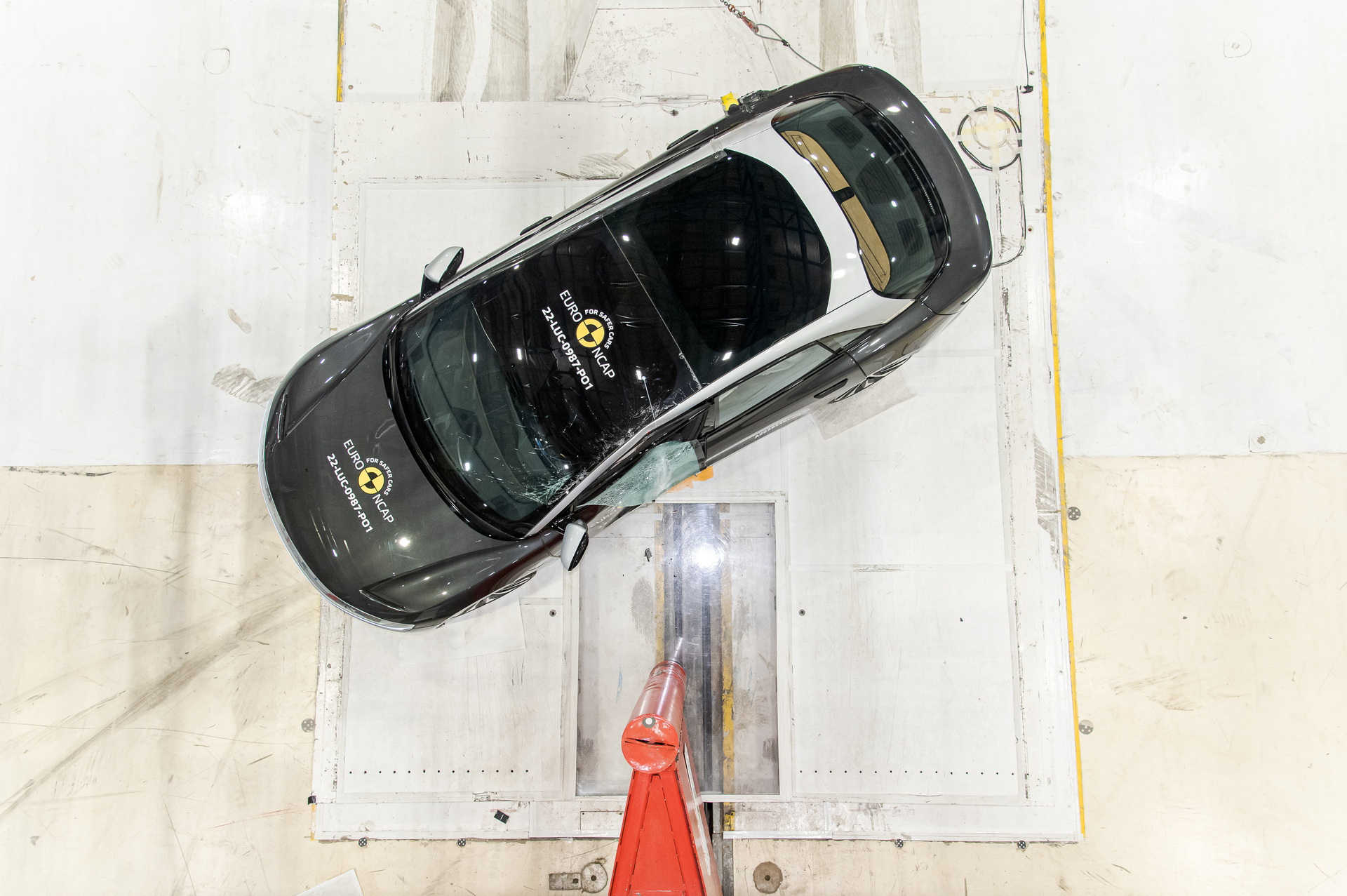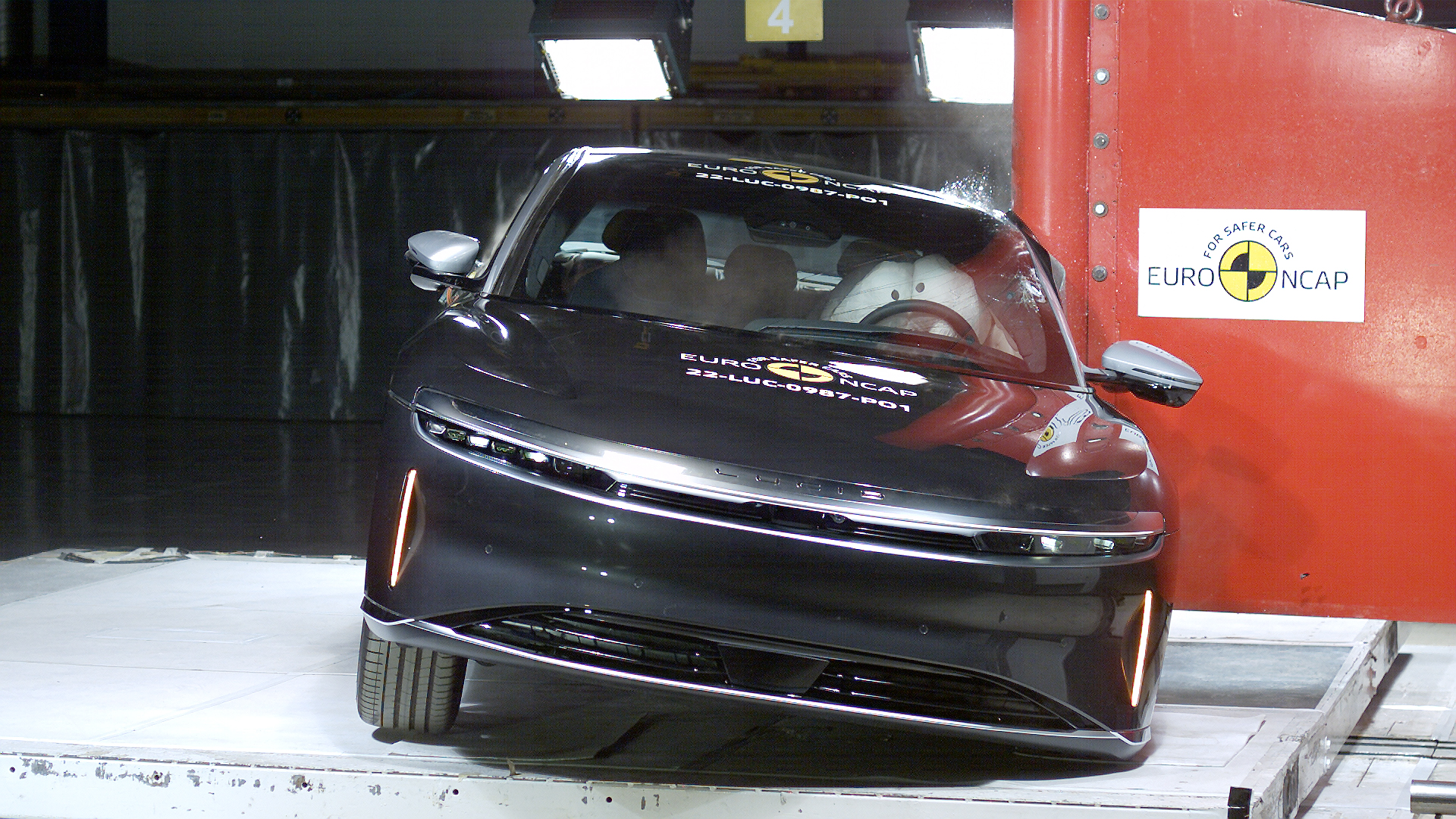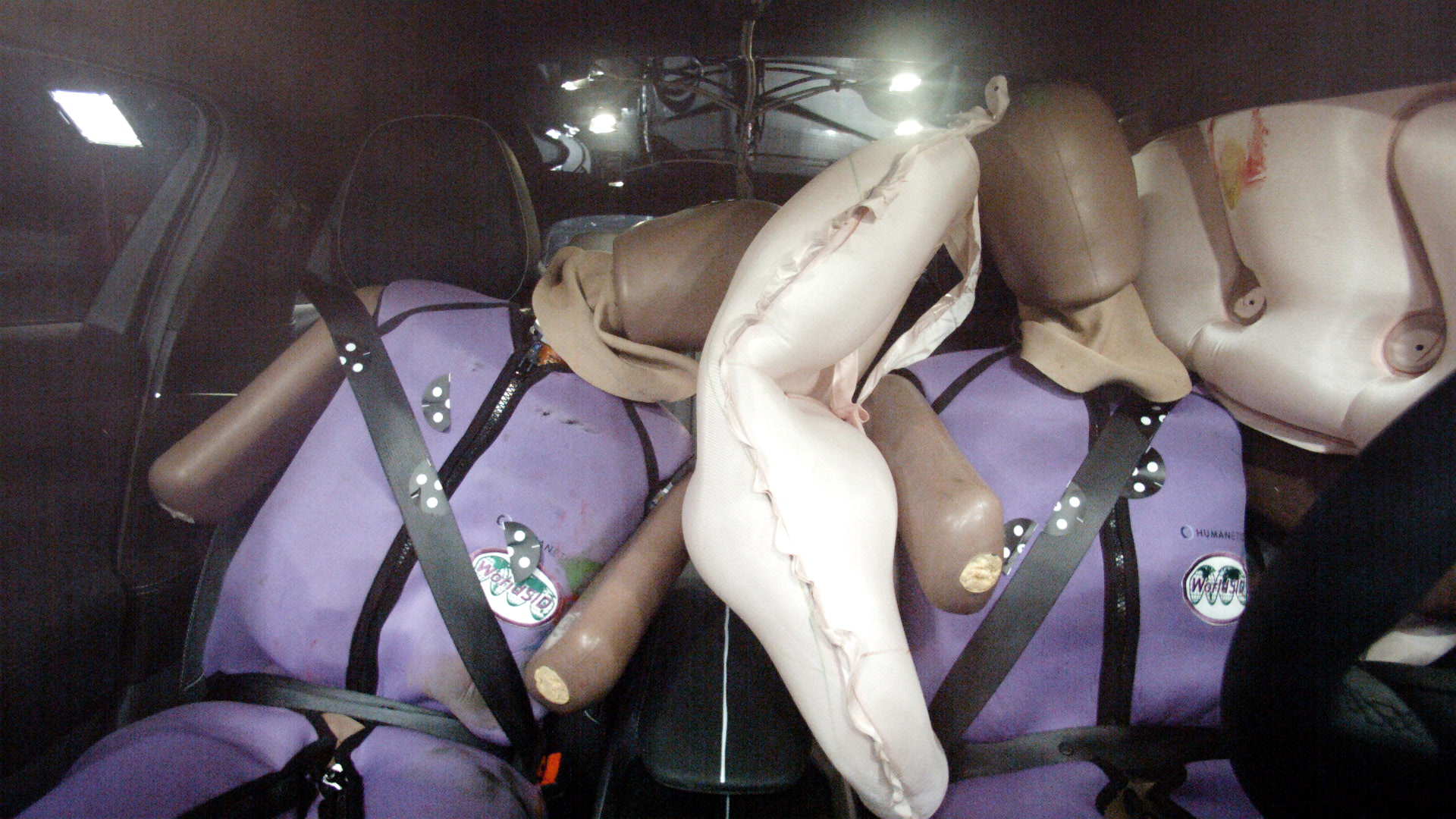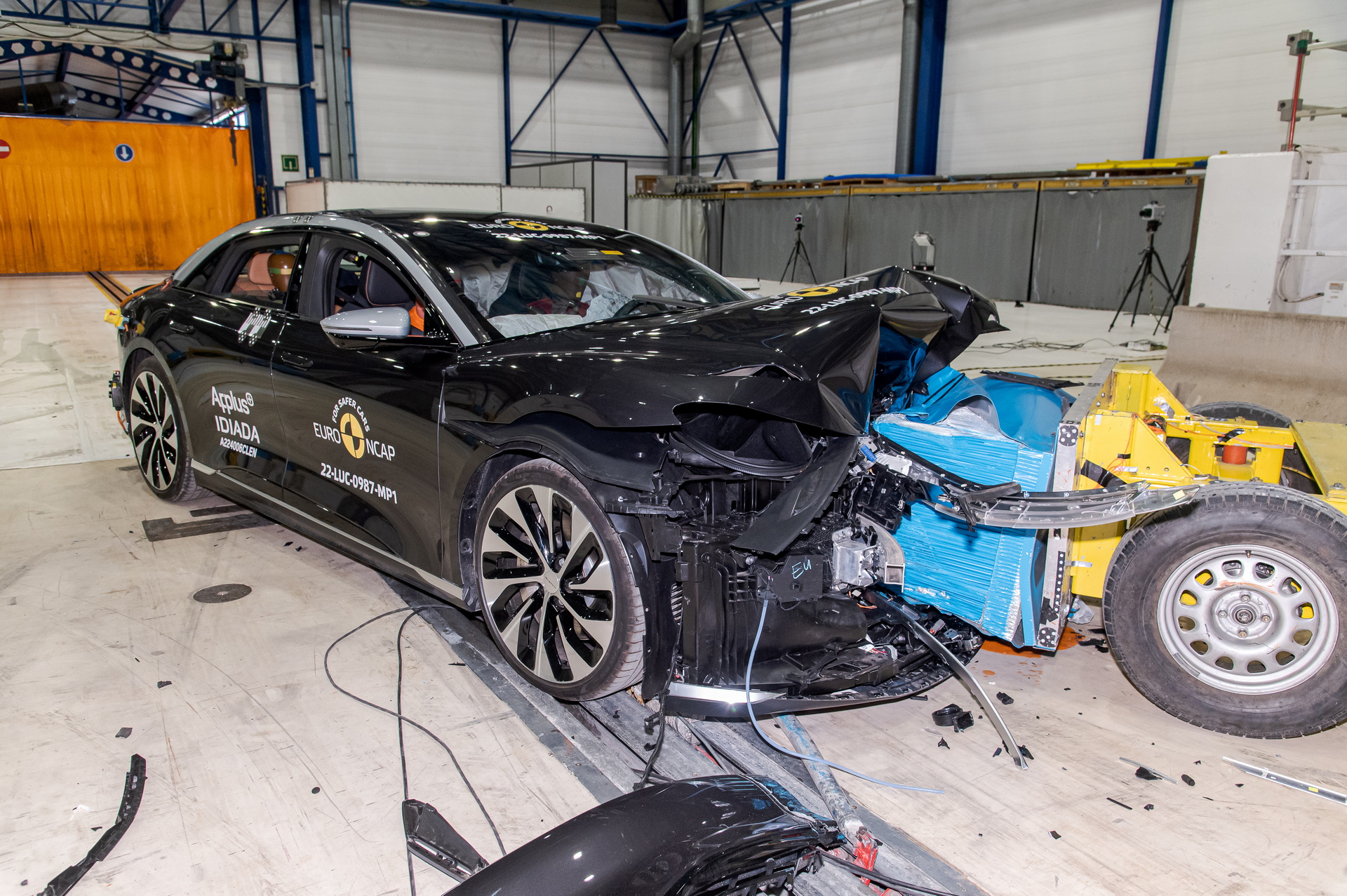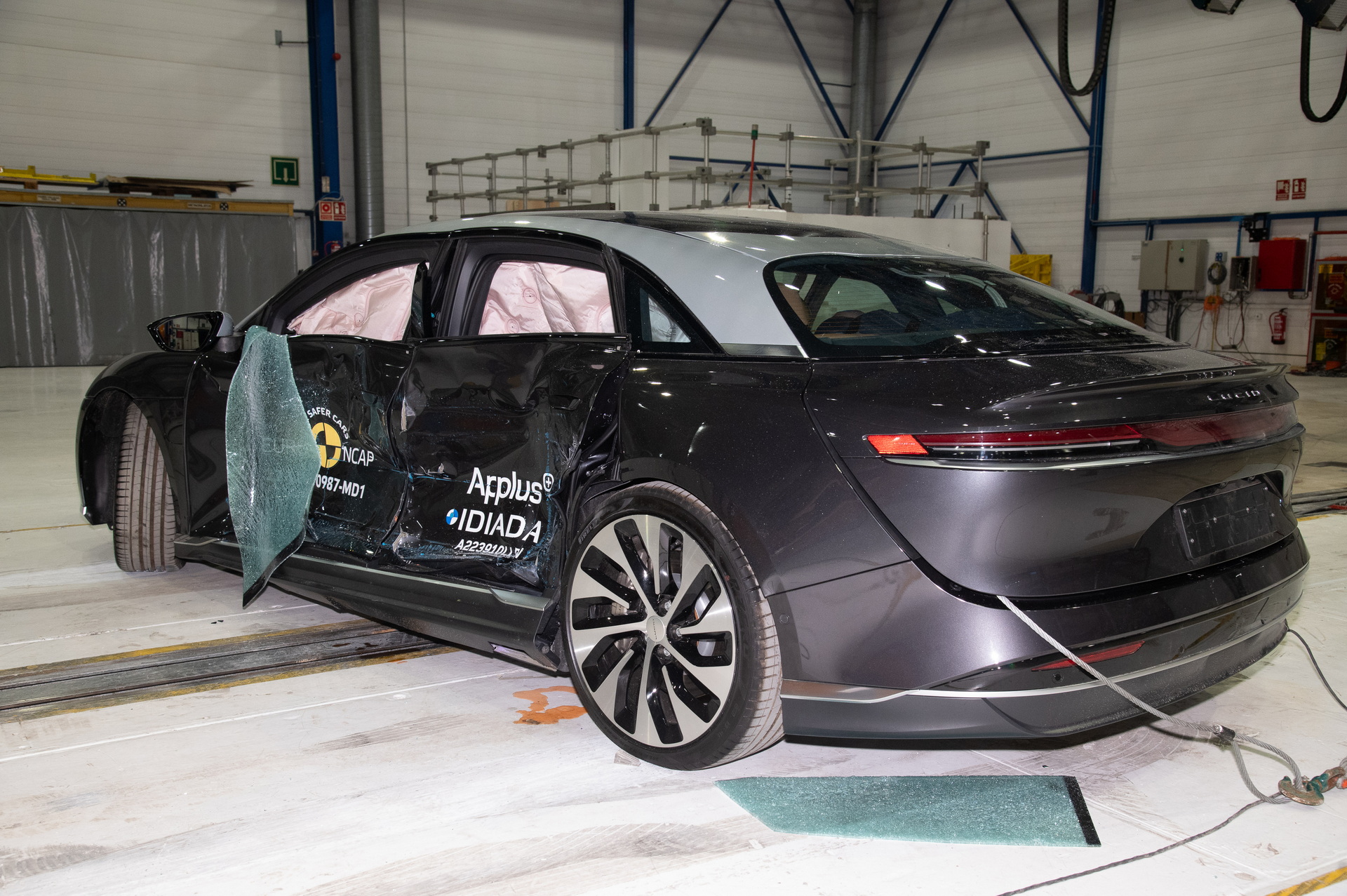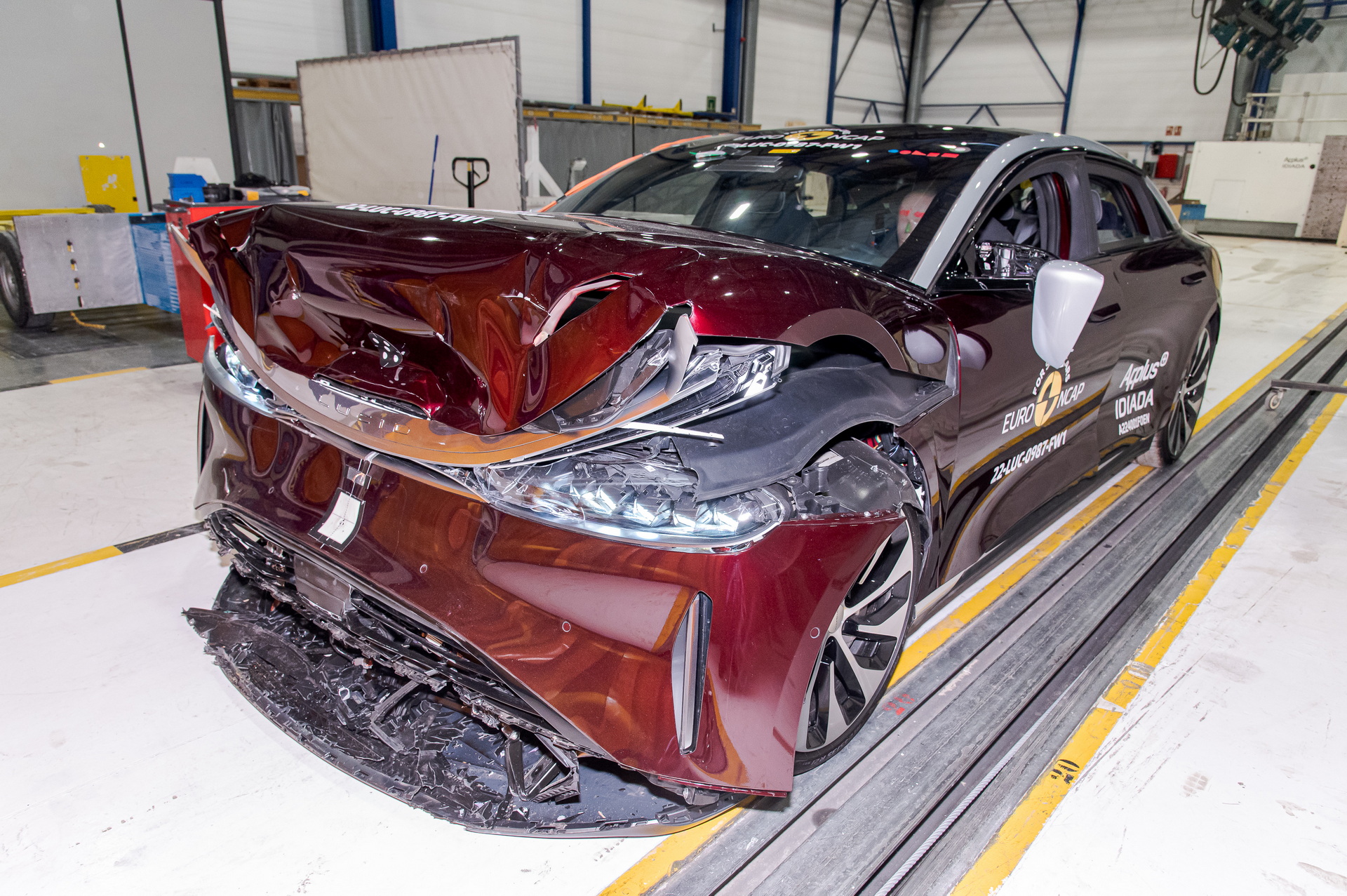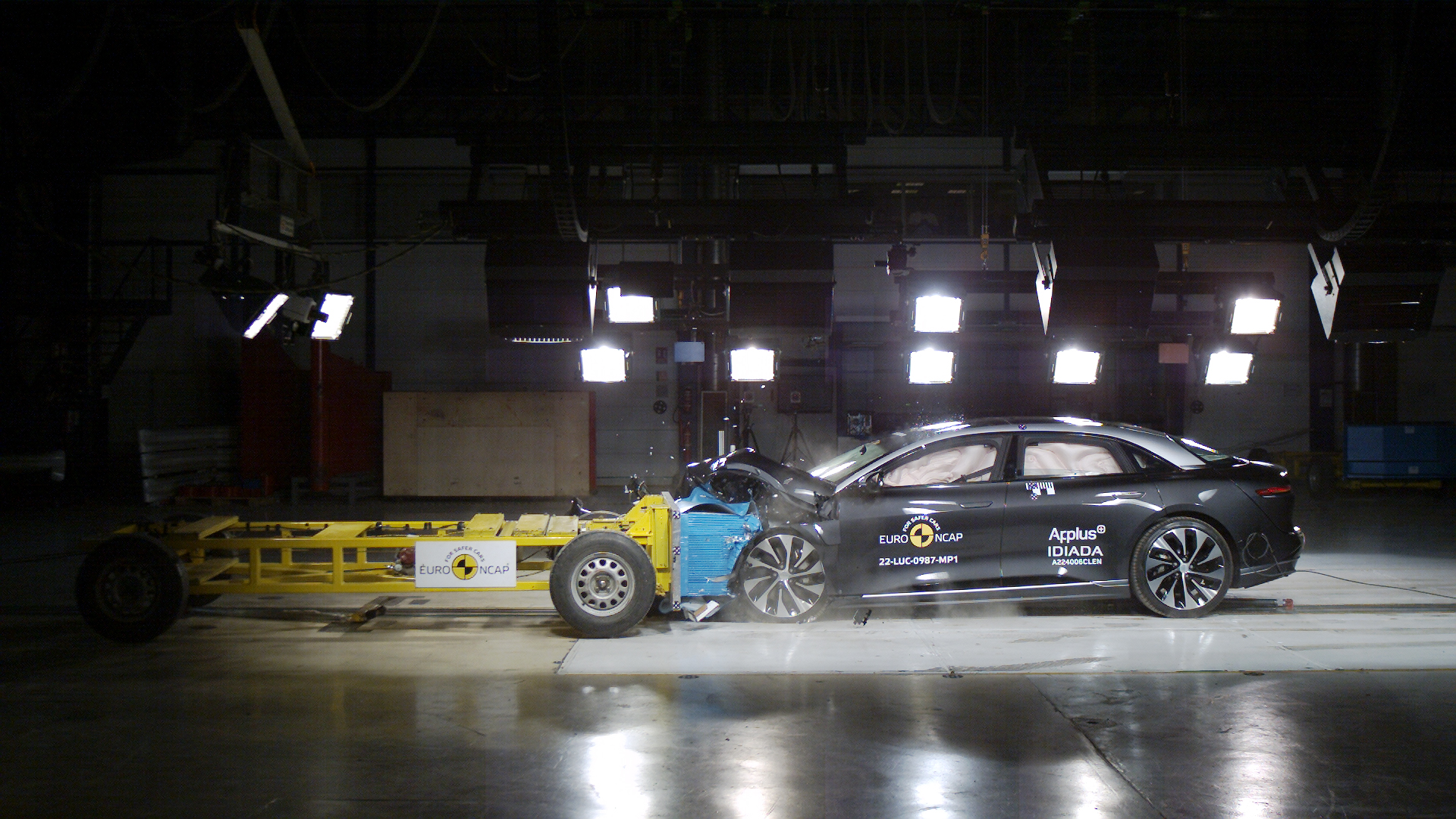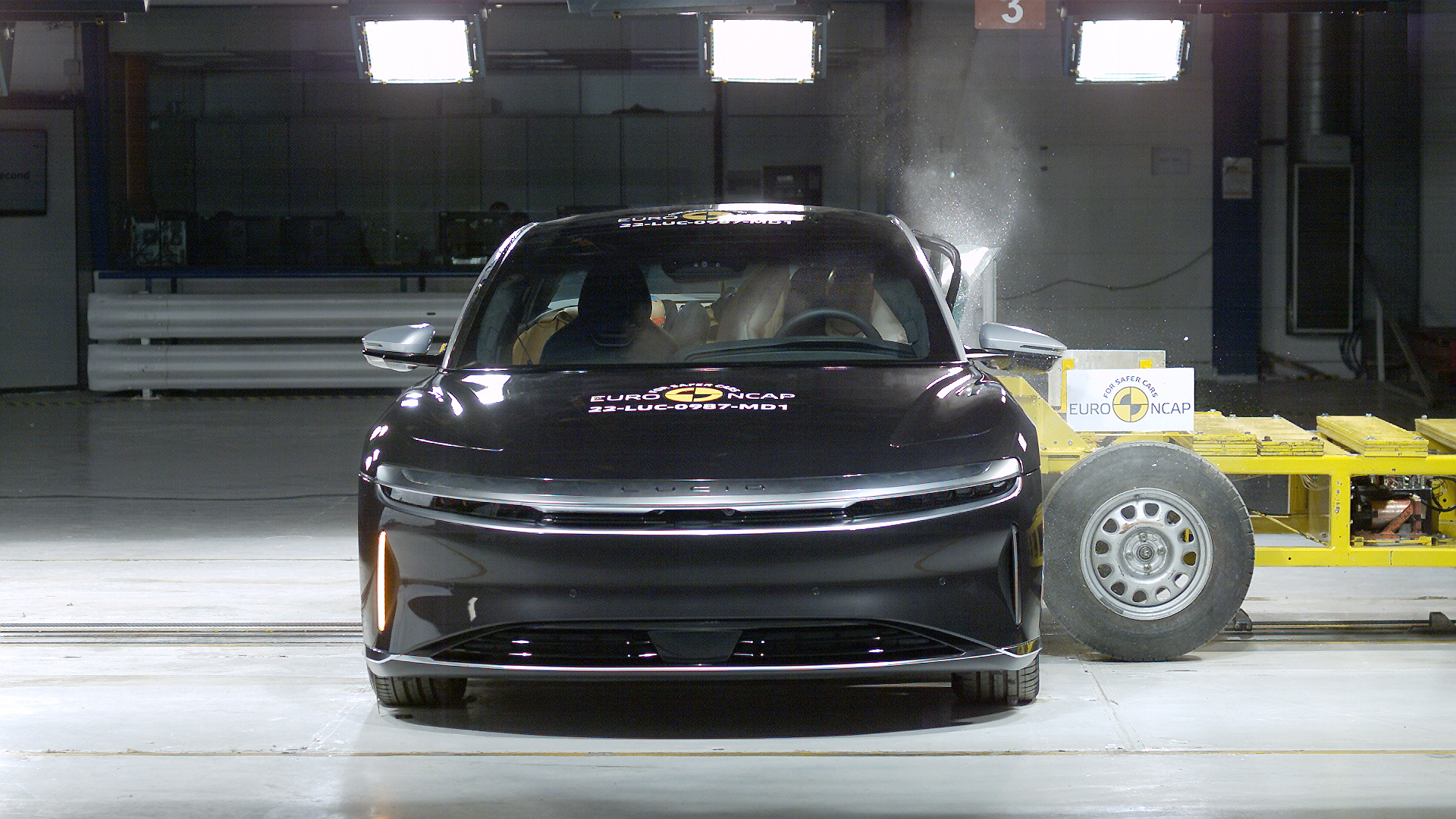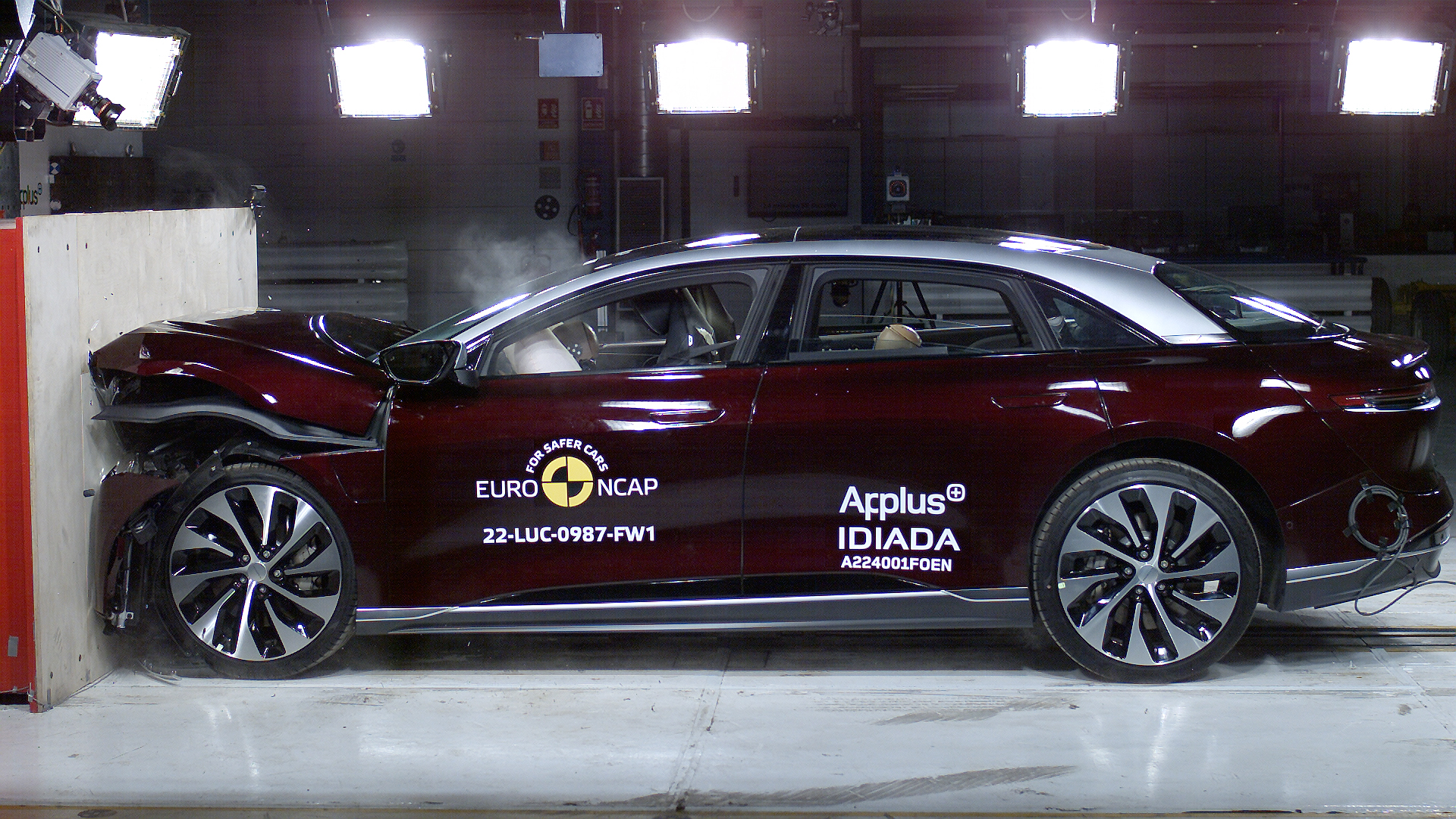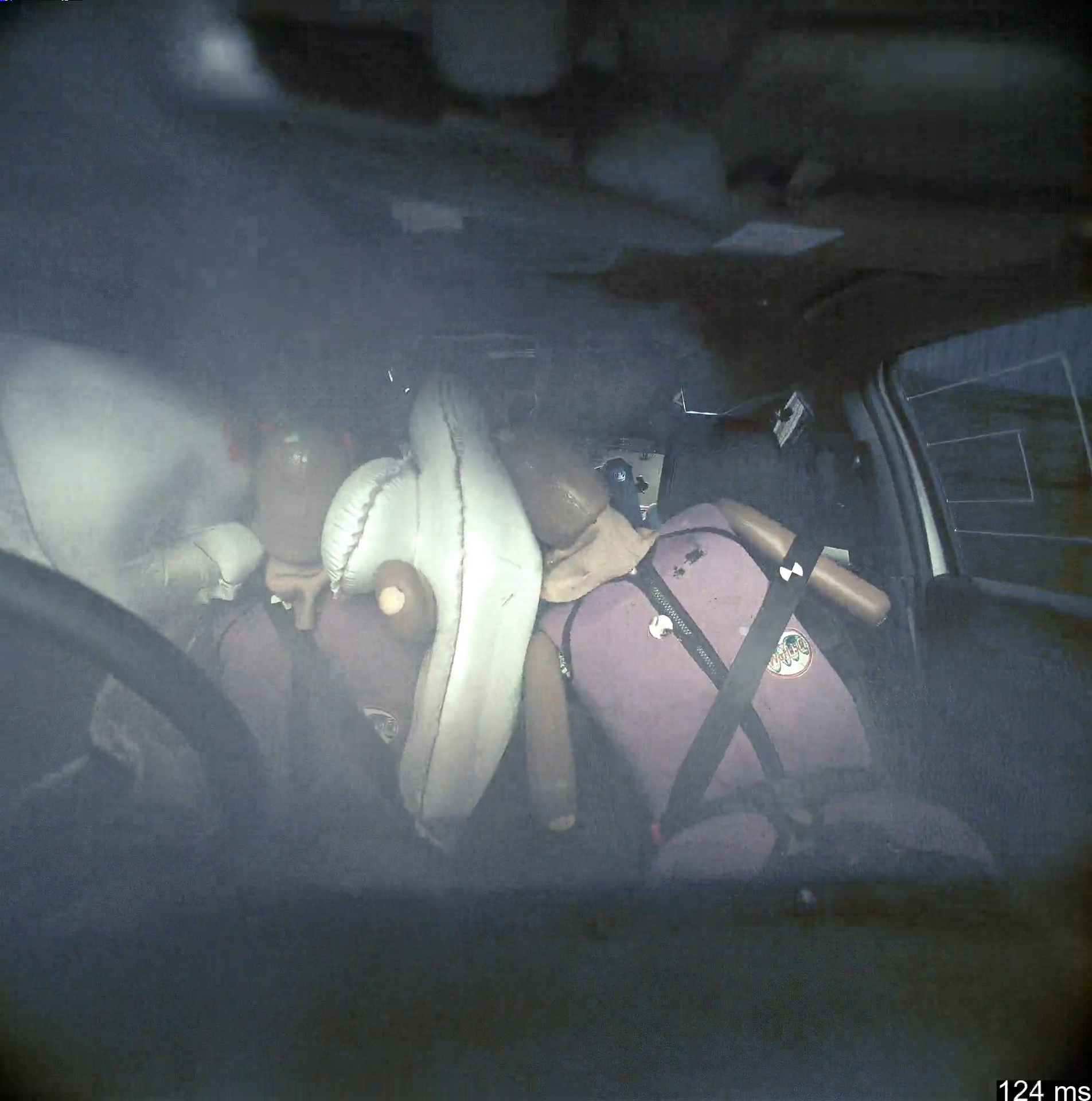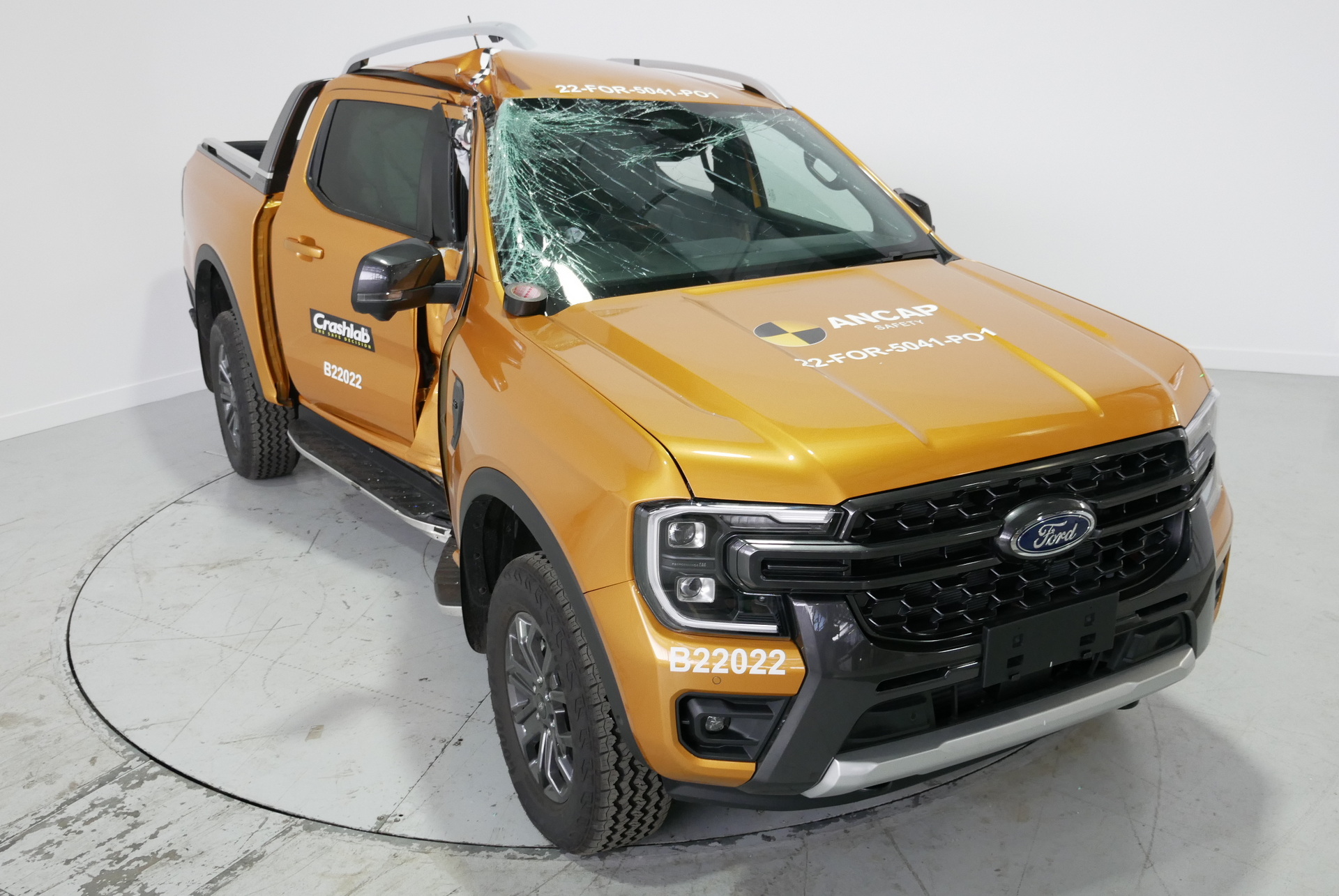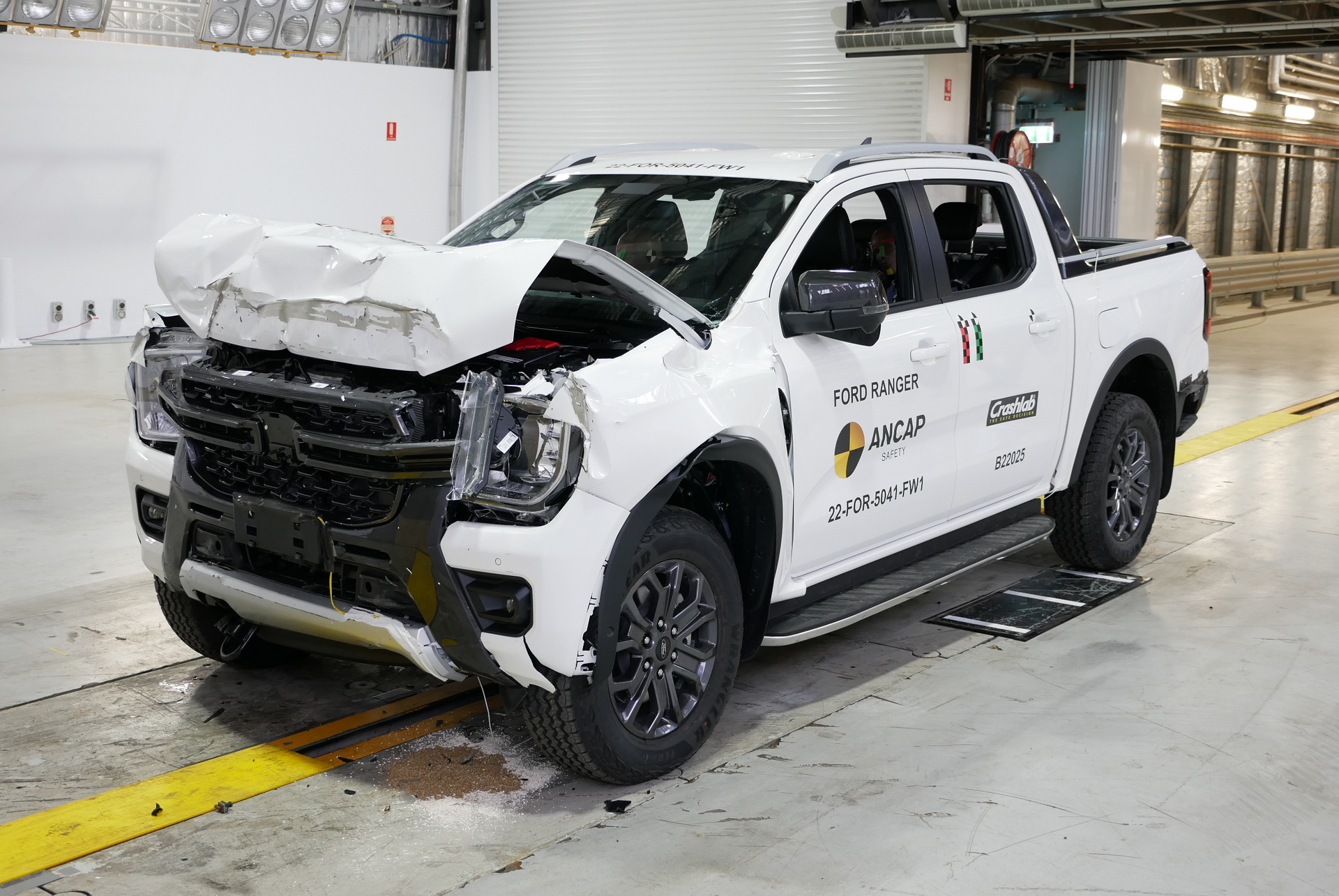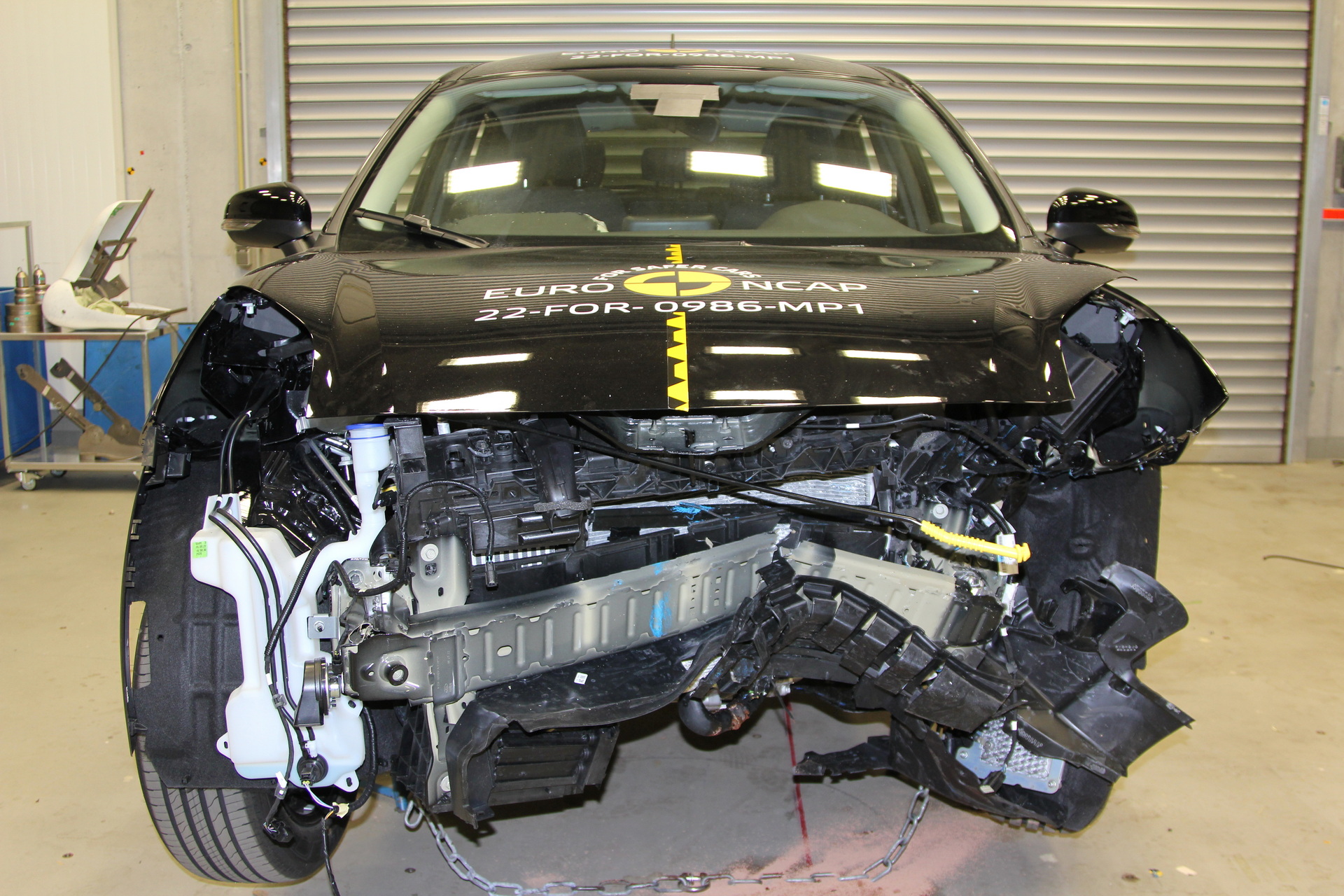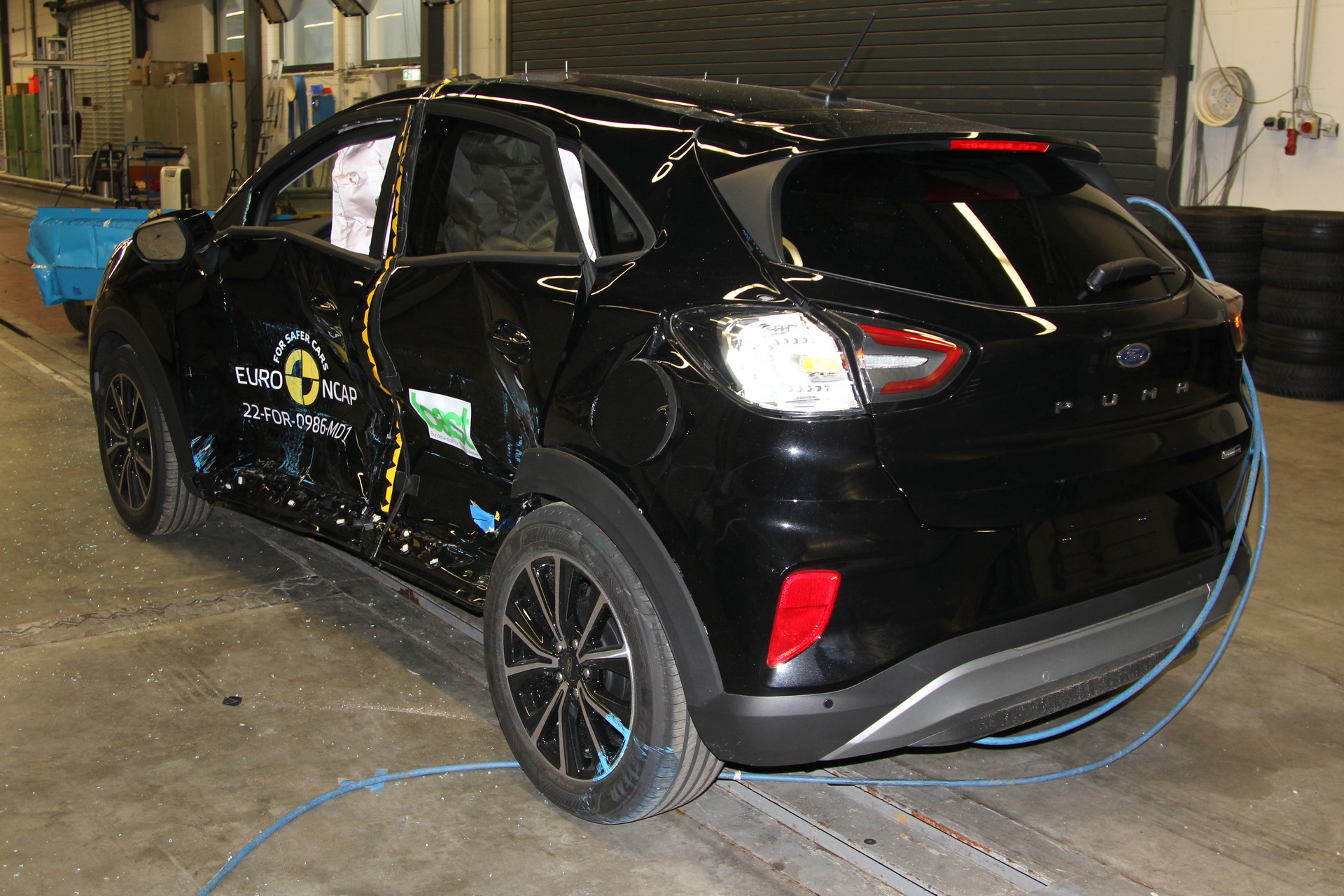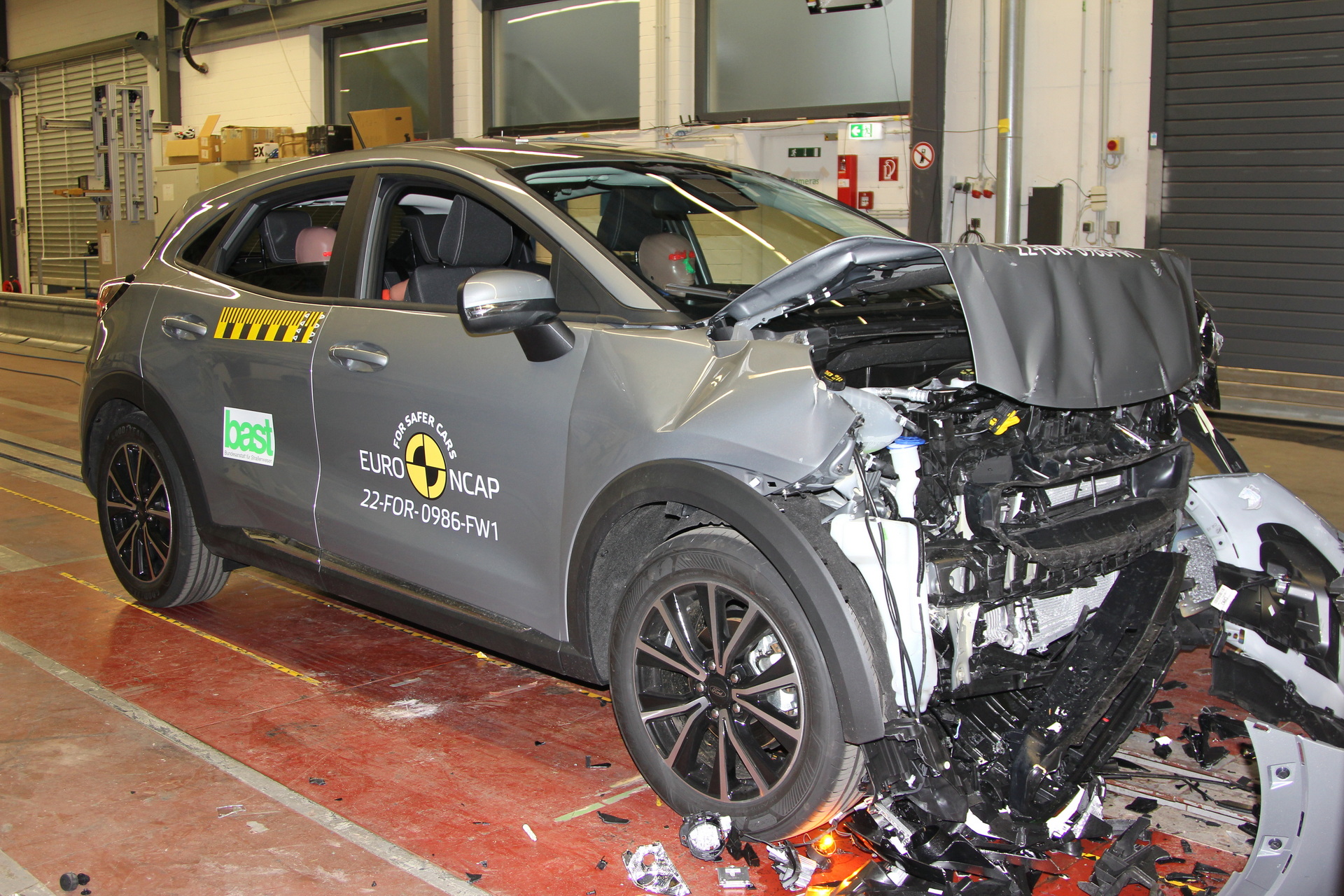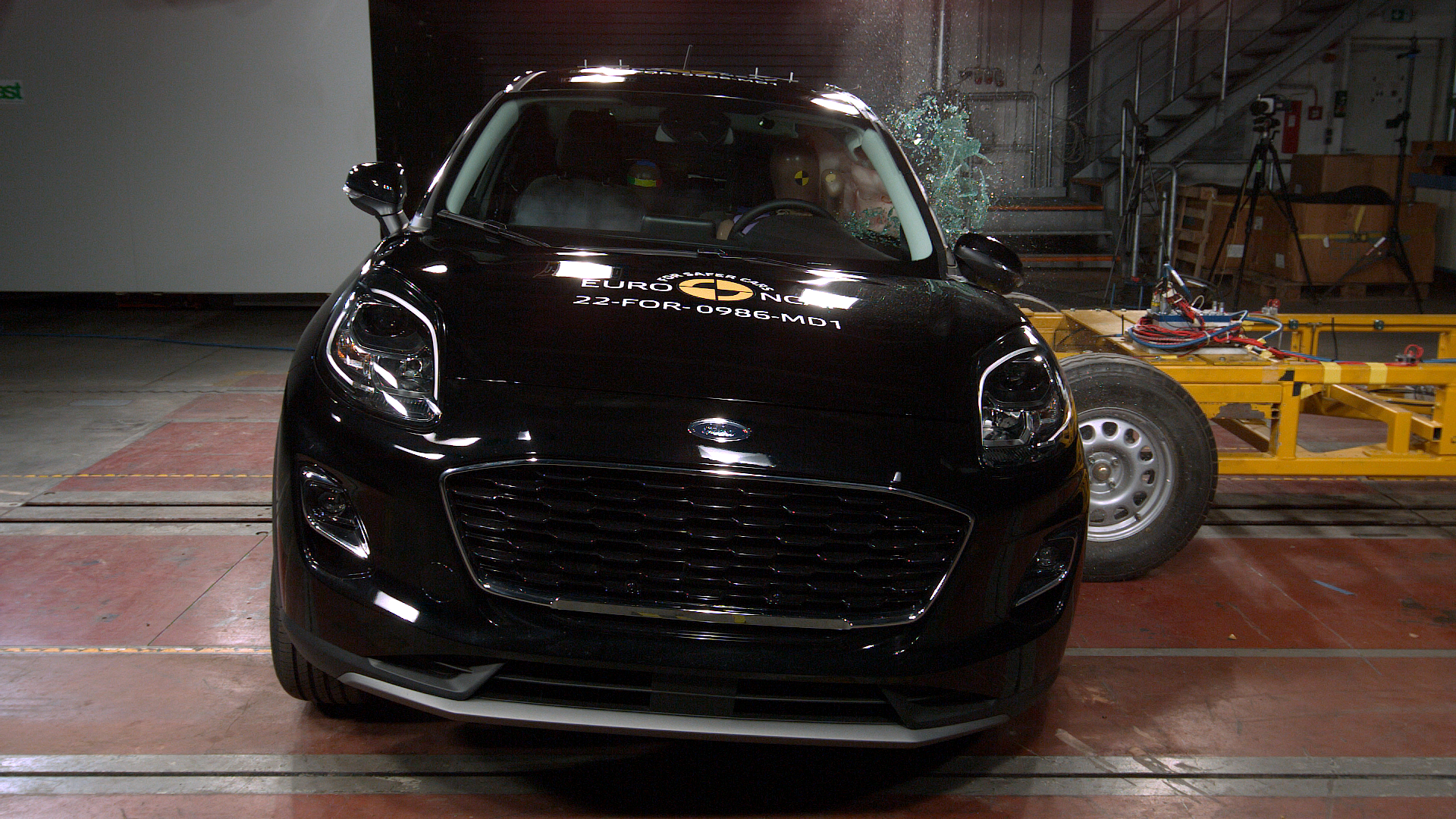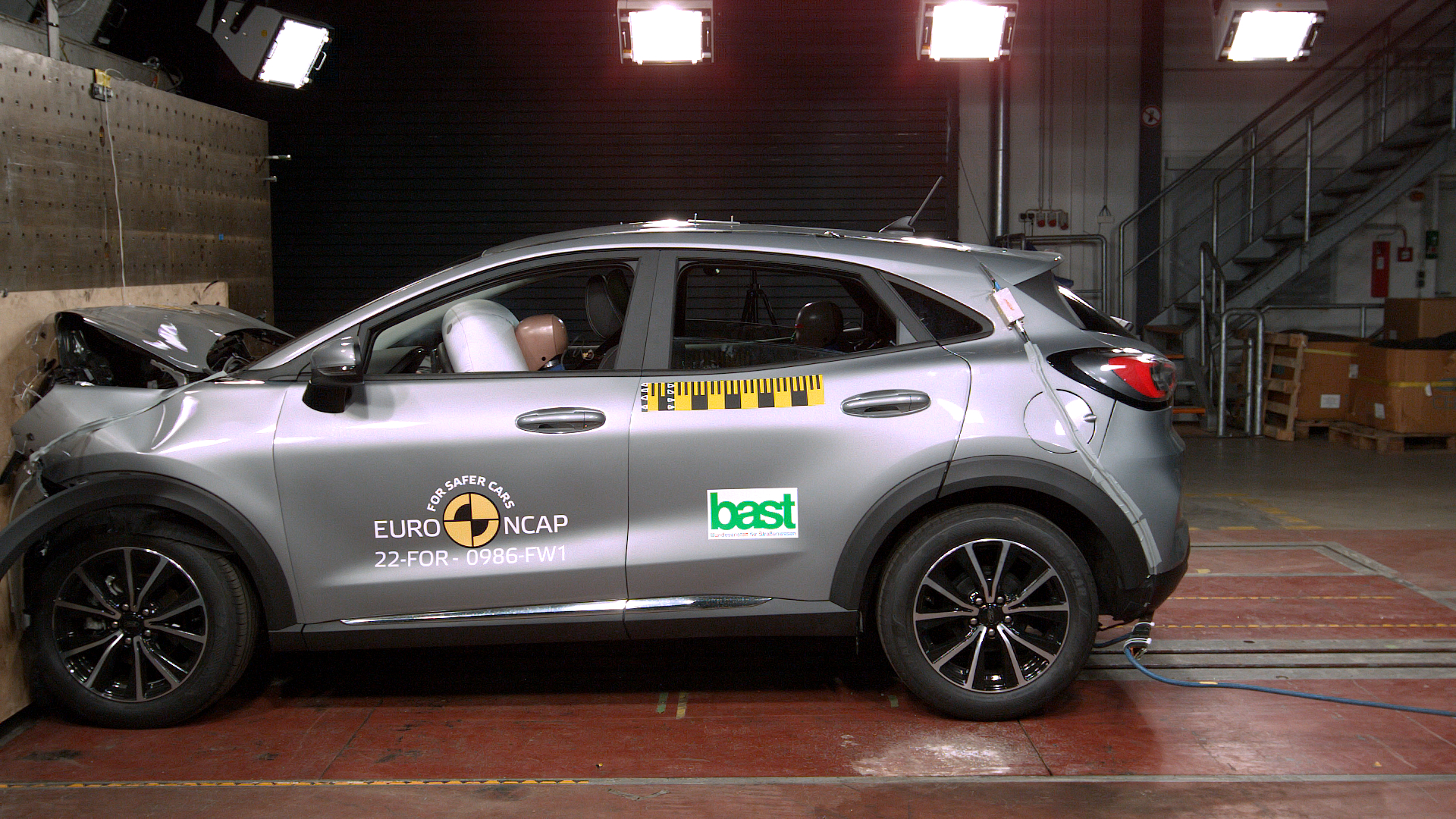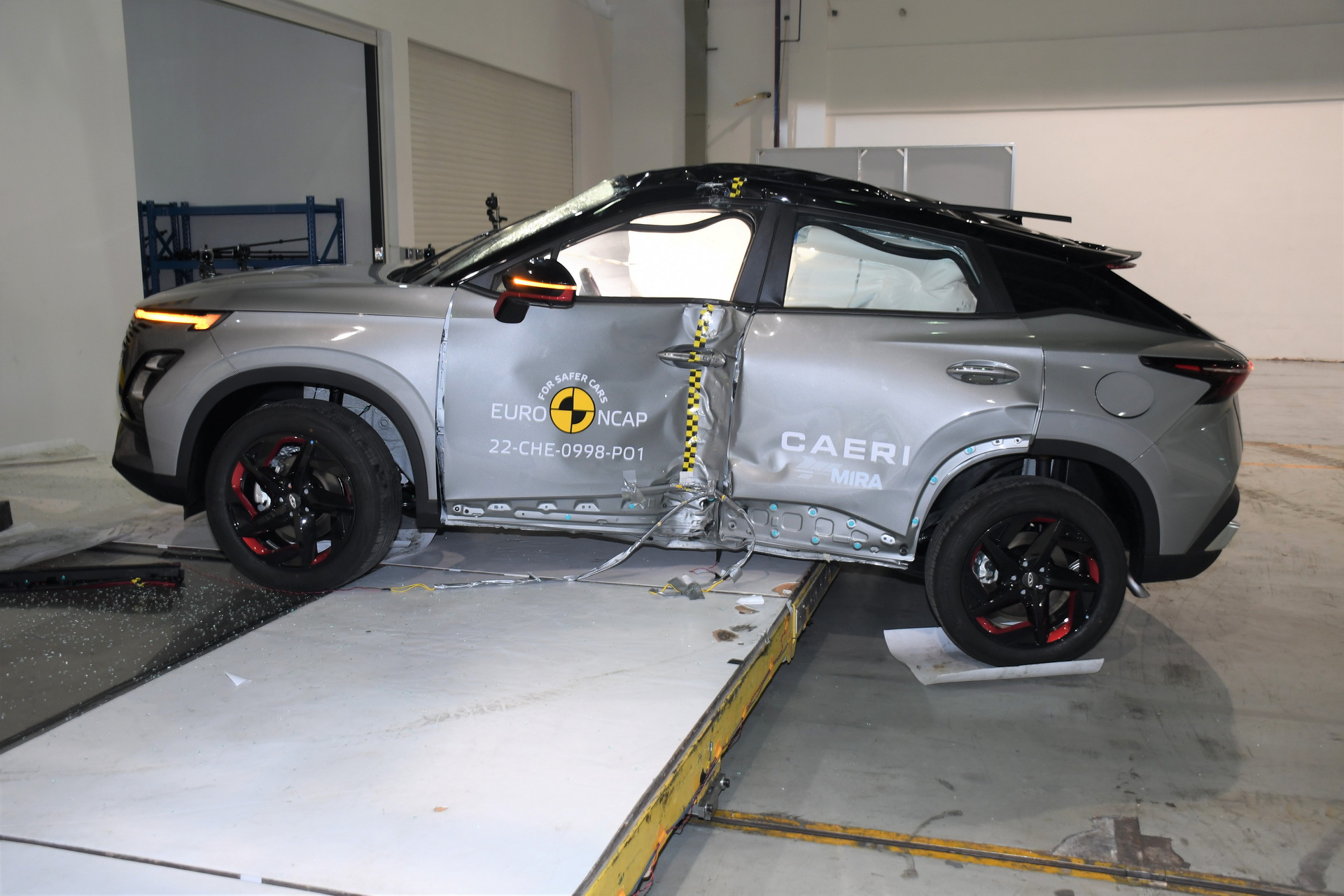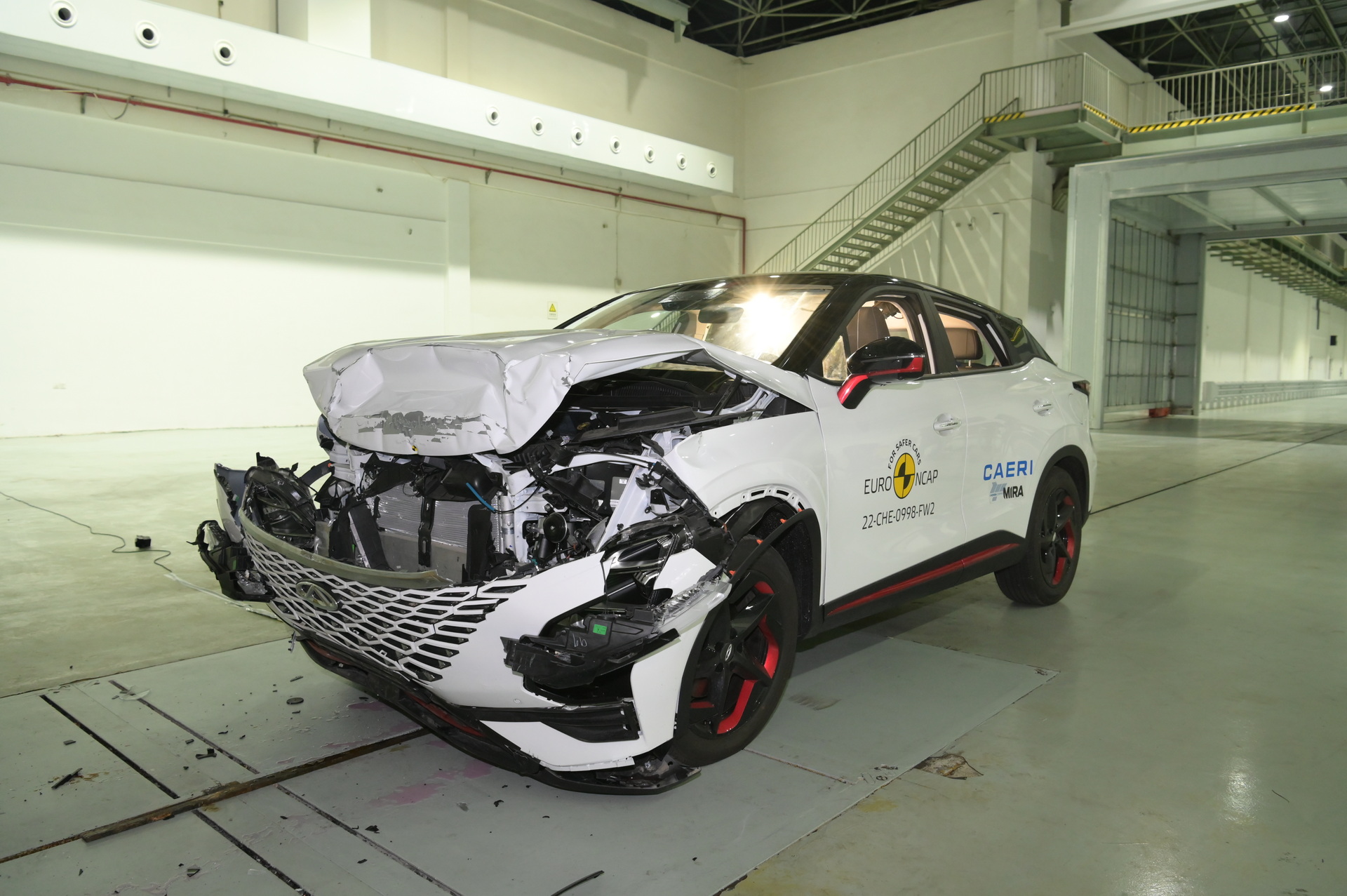Euro NCAP published the final batch of results for 2022. All but three of the 14 tested models were five-star earners, including the Lucid Air, VW ID. Buzz, Ford Ranger / VW Amarok twins, Lexus RX, Mercedes GLC, plus the Chinese Chery Omoda5, Maxus Mifa 9, and MG 4.
Starting with the Lucid Air, the automaker’s first production EV did great in all tests achieving a five-star rating although it scored below the rival Tesla Model S on adult occupants (90% over 94%), vulnerable road users (78% over 85%), and safety assist (84% over 98%), with a matching score on child occupants (91%). Euro NCAP praised the premium electric sedan for its safety equipment.
Read: 15 Cars Including The Hyundai Ioniq 6 And Tesla Model S Get A Perfect Score In Euro NCAP Crash Tests
Vans and pickups used to do worse than conventional passenger vehicles in Euro NCAP’s tests but it seems that this is not the case anymore. The VW ID. Buzz got an impressive 92% on adult occupants, 87% on child occupants, and 90% on safety equipment, with a less-than-average 60% on vulnerable road users not being enough to deprive it of the five-star rating. Despite its one-box shape and ultra-short nose, the van proved to be an excellent performer on crash tests.
Another impressive performance for their segment came for the Ford Ranger and VW Amarok pickup duo. The two trucks are identical in terms of mechanical components and safety features, and when Euro NCAP tested both, the results were unsurprisingly the same. The twin models scored 84% on adult occupants, 90% on child occupants, 74% on vulnerable road users, and 84% on safety assist for a clean five-star rating.
Other vehicles with a bad safety reputation were those coming from Chinese automakers. This stereotype is now obliterated, as most China-built models have proven to be as safe as their European, Japanese, and US competitors. This batch of Euro NCAP testing included the Chery Omoda5 SUV, the Maxus MIFA 9 minivan, and the MG 4 electric hatchback. All of them got the top safety rating of five stars.
Predictably, among the five-star earners were three premium SUVs – the Lexus RX, the Mercedes-Benz GLC, and the Land Rover Discovery Sport. The Lexus RX was the largest of the three in terms of footprint and did quite well with 90% on adult occupants, 87% on child occupants, 89% on vulnerable road users, and an impressive 91% in safety assist. The all-new Mercedes-Benz GLC had similar scores with the mechanically-related C-Class sedan, with 92% on adults, 90% on children, 74% on vulnerable road users, and 84% on safety assist.
Joining the VW Group models that got re-tested for 2022 after the VW Golf, is the Skoda Octavia, which also benefits from a central airbag. Compared to the original test in 2019, the slightly updated 2022 model has improved in the area of safety assist, scoring 81% against 79%. Due to the stricter protocols, the other scores are slightly worse (86% over 92% on adult occupants, 84% over 88% on child occupants, and 68% over 73% on vulnerable road users) but good enough for the Czech model to comfortably retain its five-star rating overall.
The only three models that were limited to four stars were the re-tested VW Touran minivan, Ford Puma SUV, and the all-new Peugeot 408 fastback. The rating of the VW Touran is actually surprisingly good for a model that was originally introduced back in 2015. The Ford Puma on the other hand lost a star compared to the original tests when it came out in 2019, but we should remember it is a small SUV sharing its underpinnings with the soon-to-be discontinued Fiesta.
The Peugeot 408 fastback might be a flagship of the French automaker’s range but its underpinnings are shared with the smaller 308 hatchback, which also got a four-star rating. The design differences between the two models give the 408 a better result on vulnerable road users (78% against 68%) while retaining the same 76% on adult occupants, 84% on child occupants, and 65% on safety assist. Another Stellantis model with a four-star rating is the Citroen C4 X.
This has been one of the busiest years for Euro NCAP, especially towards the end with many automakers trying to get tested with the current safety protocols. The reason for that is the forthcoming update for 2023, which will bring more focus to vulnerable road users (motorcycles, cyclists, and pedestrians), making it harder for contestants to achieve top scores.




